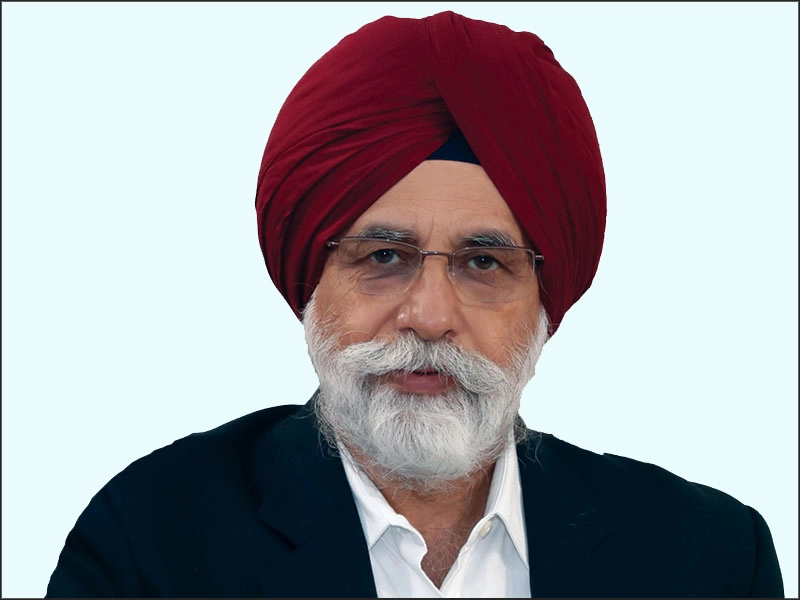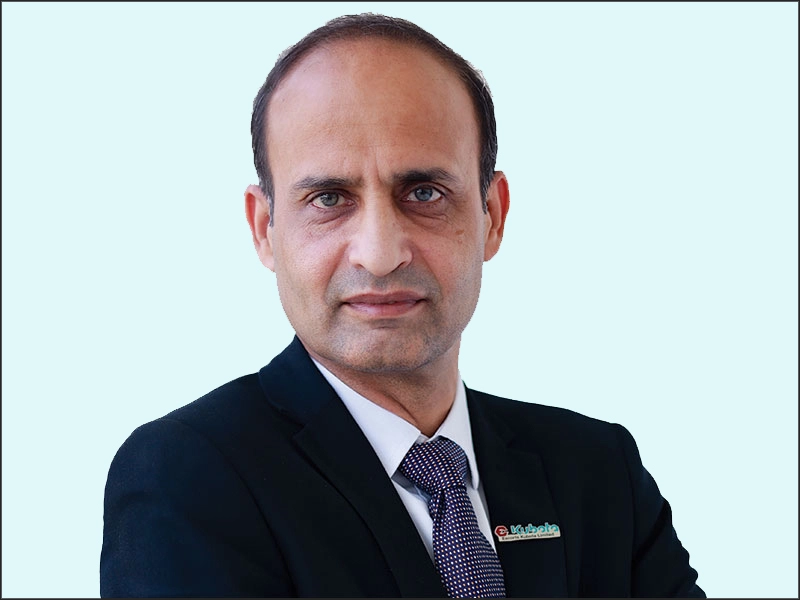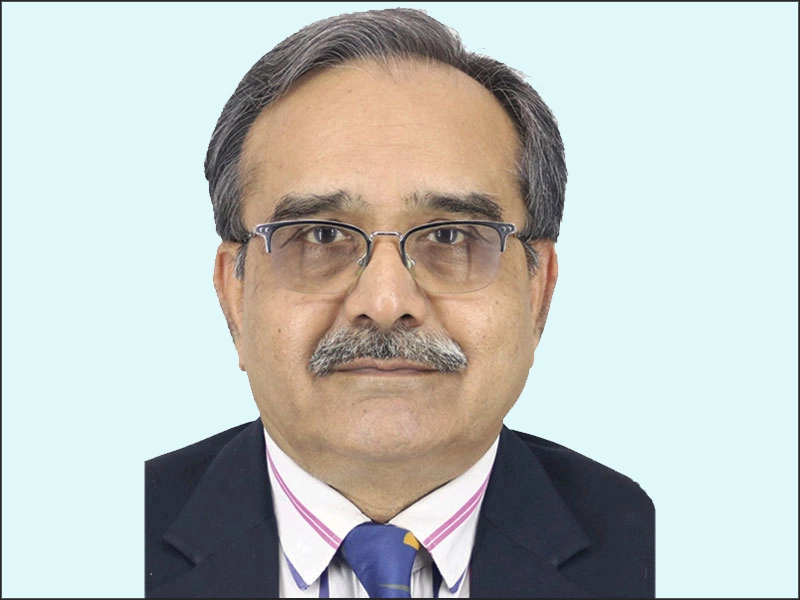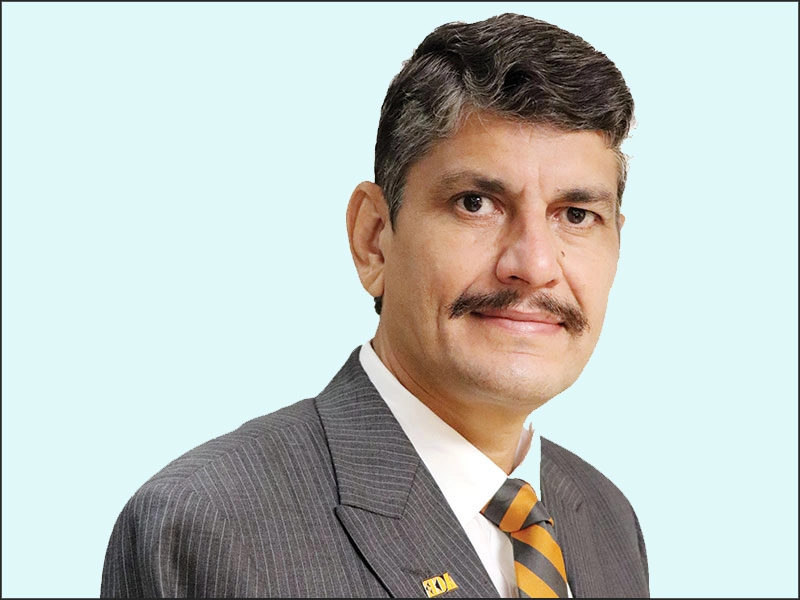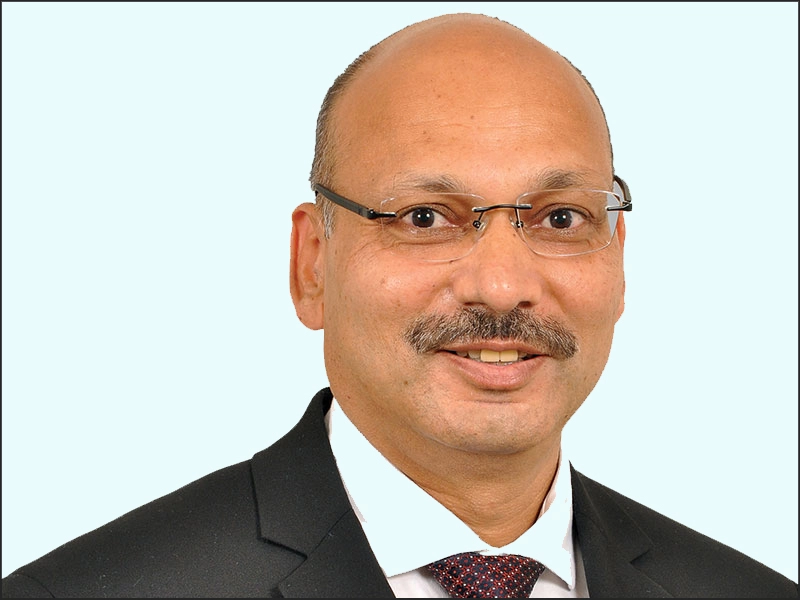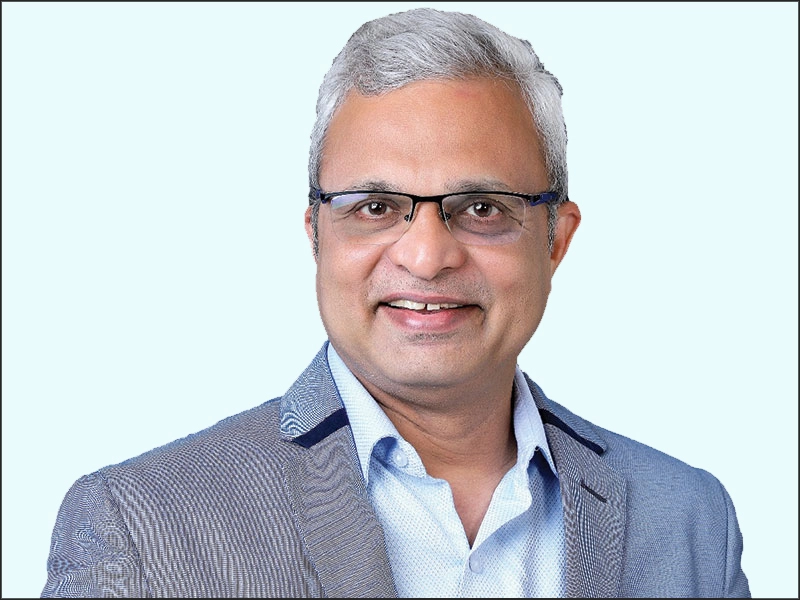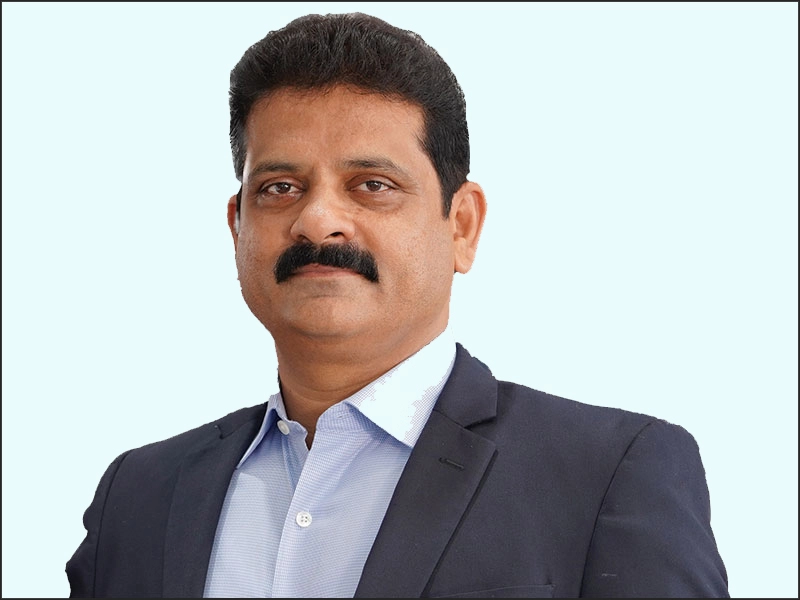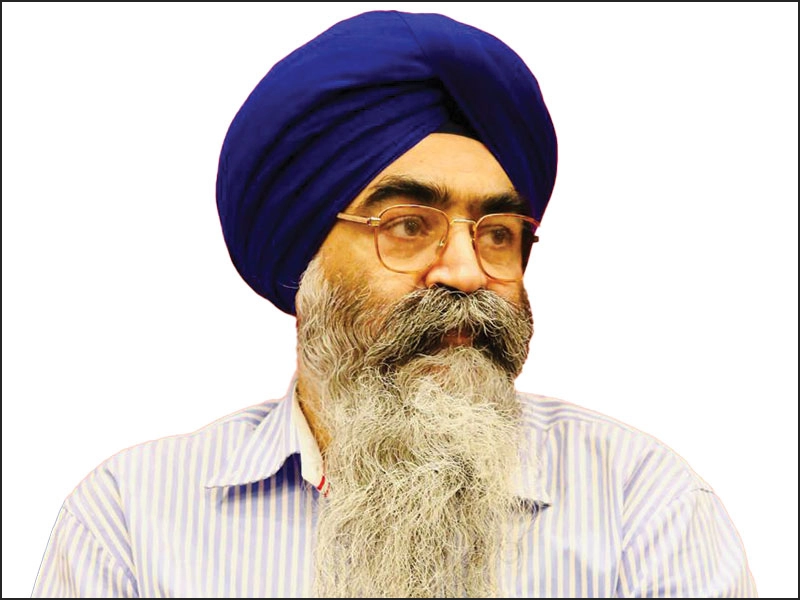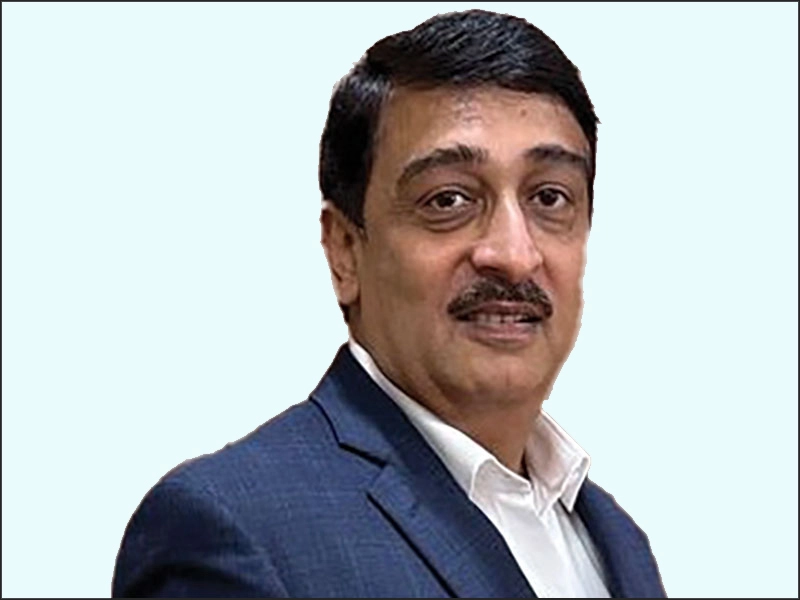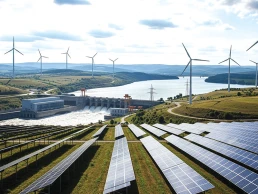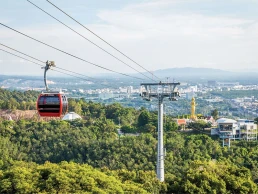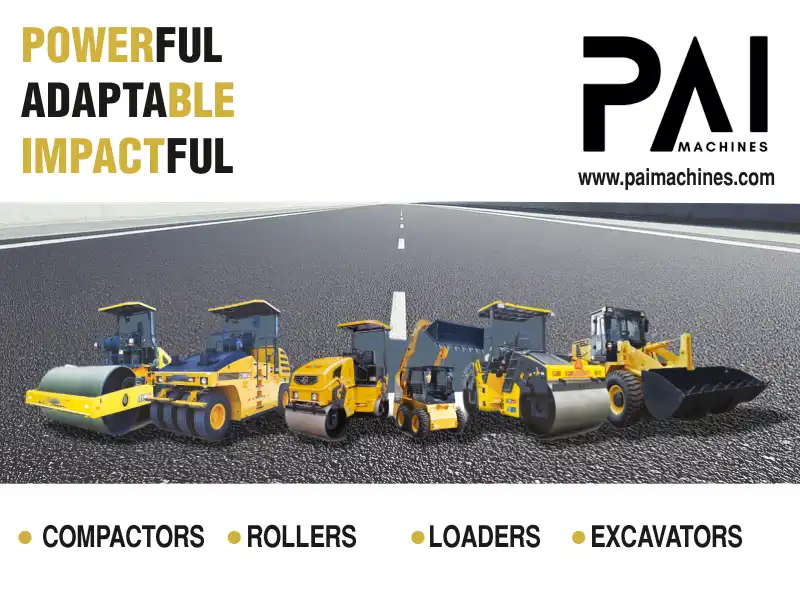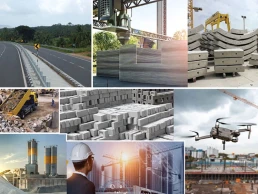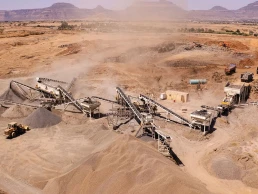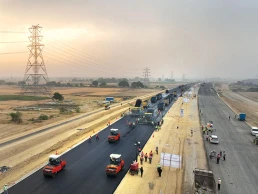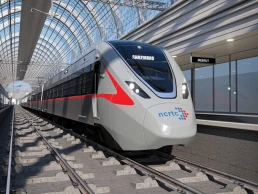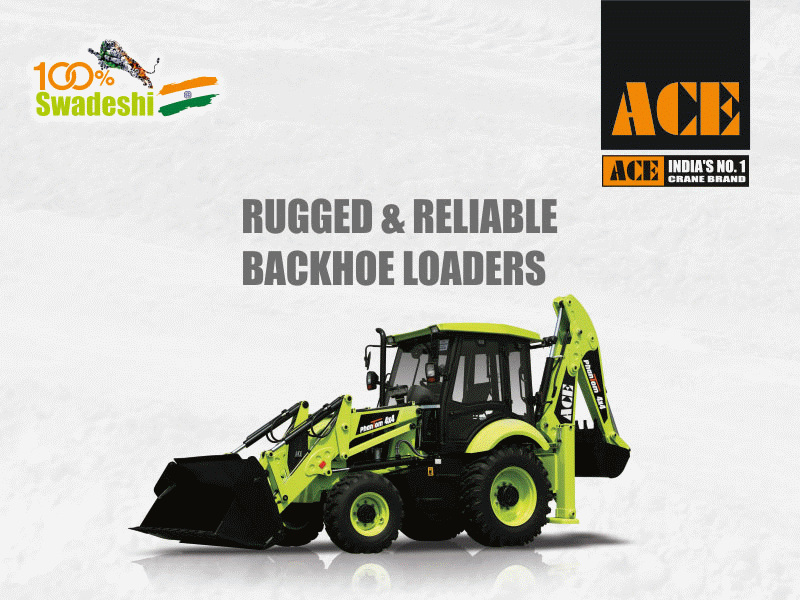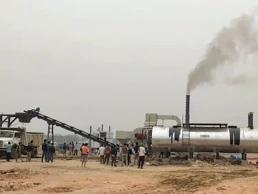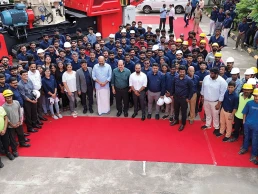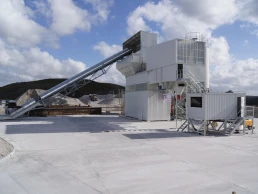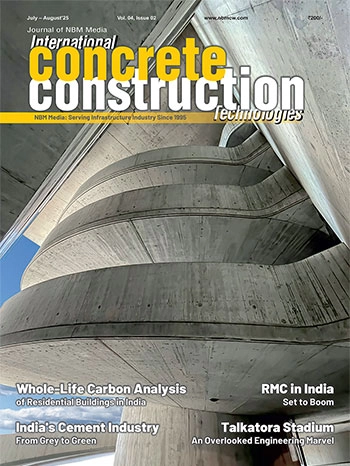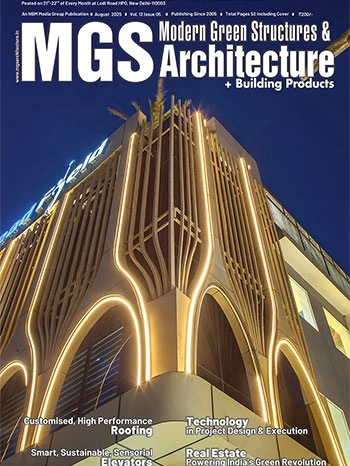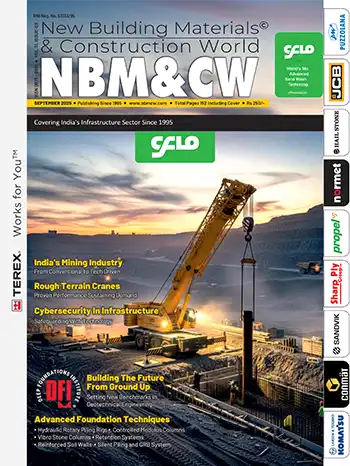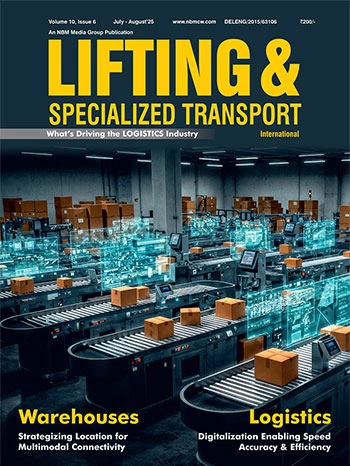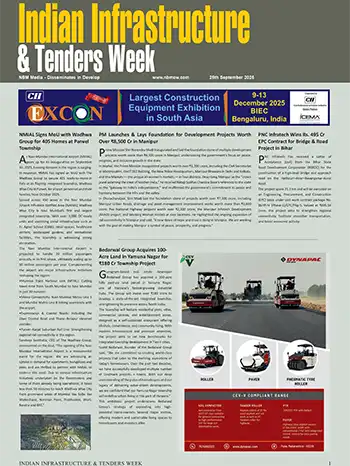India's Backhoe Loader Industry Adapts to BS-V Emission Norms
India’s wheeled construction equipment industry, specially backhoe loader segment is undergoing a significant transformation with the rollout of BS-V emission norms and new safety regulations. This shift, from BS-III and BS-IV to BS-V, has elevated Indian construction equipment sector to global standards, comparable to European Stage V, making them more technologically advanced, fuel-efficient, and environmentally friendly.
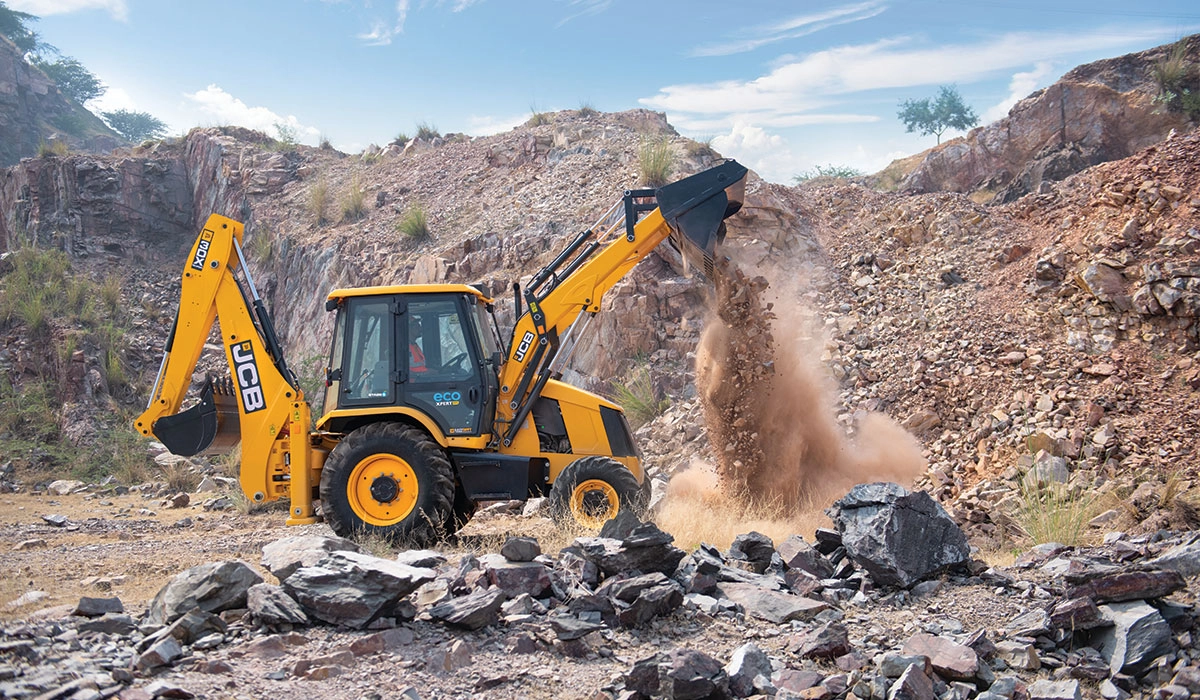
But this progress comes at a cost: the transition from BS-III to BS-IV in FY2022 has pushed equipment prices up by 10-15% and now again by 5-7% in FY2025 creating financial pressure, particularly for first- and second-time buyers who make up nearly 80% of the market. While the benefits of BS-V compliant machines include better fuel efficiency, lower emissions, improved uptime, and reduced maintenance, these long-term gains are not always easy to quantify for cost-sensitive buyers. The feedback from rental companies and sub-contractors suggests that such increase in pricing within a span of two years, along with more complex fuel systems, sensors, electricals, and electronics, is raising concerns about affordability, reliability, and serviceability.
FY 2025 saw relatively flat sales of backhoe loaders, with a little over 53,000 units sold, largely driven by pre-buying ahead of the January 2025 BS-V implementation to avoid expected price hikes. As the market stabilizes, FY 2026 will be a crucial year in determining how well the industry adapts to the new regulatory landscape.
ICRA anticipates that OEMs will pass on the increased cost burden to customers gradually, through periodic price hikes spread over the next 12–18 months. However, this phased increase, combined with a muted credit growth outlook from banks and NBFCs, could weigh down affordability and sales volumes in the short term, especially through FY2026.
Despite these headwinds, the long-term outlook remains positive. The momentum is expected to continue, supported by large-scale, government-led infrastructure programs. Flagship initiatives such as PM Gati Shakti, Jal Jeevan Mission, PM Gram Sadak Yojana, the Smart Cities Mission, and consistent capital allocations in successive Union Budgets are laying a strong foundation for sustained demand and growth in the construction equipment sector, especially for backhoe loaders.
To understand the ground realities better, we reached out directly to users of backhoe loaders. Many expressed concerns over rising equipment prices, especially with rental rates remaining stagnant. This prompted us to do this story, bringing both manufacturers and users onto a common platform for a healthy, solution-oriented discussion. Manufacturers share their strategies, ranging from operator training and financing support to integrating future-ready fuel technologies, users voice what matters most to them in day-to-day operations. Together, these perspectives aim to provide a well-rounded view of the BS-V transition and its implications for the Indian backhoe loader ecosystem.
JCB India: Deepak Shetty
▼
By optimising engine performance and incorporating advanced fuel-saving technologies, JCB Stage 5 BHLs deliver 10–12% improved fuel efficiency, which, over a 5-year period, translates into savings of Rs 3.6–Rs 4.5 lakh per machine.
Deepak Shetty, CEO & Managing Director, JCB India
How will implementation of CEV Stage V emission standards make the CE industry more efficient?
The heavy construction equipment industry is currently experiencing robust growth, driven by expanding infrastructure development, increased government investment, and growing demand for technologically advanced machinery.The implementation of CEV Stage V emission standards in January 2025 was a major catalyst for change. It is prompting the rollout of next-generation construction equipment that is more fuel-efficient, environmentally friendly, and operationally effective. As a result, customers are increasingly prioritising equipment that not only delivers performance but also supports sustainability goals.
This momentum is expected to continue, underpinned by large-scale, government-led infrastructure projects. Flagship programs such as PM Gati Shakti, Jal Jeevan Mission, PM Gram Sadak Yojana, the Smart Cities Mission, and consistent capital allocations in national budgets are laying a strong foundation for sustained growth in the sector.
While the outlook remains positive, the industry is not without challenges. Rising input costs, tighter access to credit, and global geopolitical uncertainties—including U.S. tariffs, supply chain disruptions, and shipping bottlenecks—pose potential headwinds. However, the sector remains resilient and optimistic about its long-term trajectory.
To stay ahead in this dynamic environment, the industry must strengthen domestic manufacturing, accelerate the adoption of green and digital technologies, and invest in workforce upskilling. There is a noticeable shift in customer expectations—from conventional machinery to intelligent, fuel-efficient, and connected equipment. Emerging technologies such as telematics, AI-powered diagnostics, IoT-based fleet management, and alternative fuel solutions are set to drive the next phase of innovation.
Despite the challenges, India’s construction equipment sector is well-positioned to play a central role in national development and economic transformation. Moreover, it continues to contribute significantly to the Government of India’s 'Make in India for the World' initiative, with Indian-manufactured equipment now reaching over 130 countries.
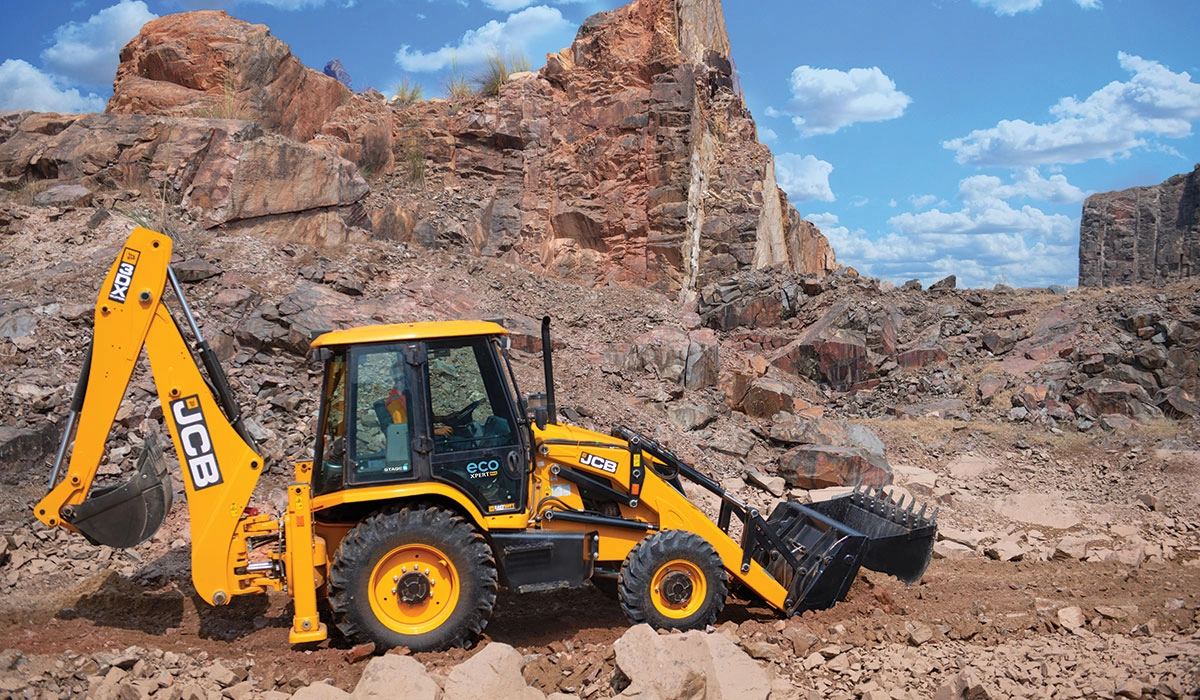
In the long run, how will BS-V compliant machines benefit users in terms of productivity, profitability, uptime, and equipment availability?
Total Cost of Ownership (TCO) is a critical consideration for businesses in the CEV industry, and JCB’s new Stage 5 Backhoe Loader (BHL) models have been designed with this in mind.By optimising engine performance and incorporating advanced fuel-saving technologies, JCB Stage 5 BHLs deliver 10–12% improved fuel efficiency over previous models. Over a five-year period, this translates into potential savings of ₹3.6–₹4.5 lakh per machine—a compelling proposition for customers looking to enhance operational efficiency and profitability in an increasingly sustainability-focused environment.
These machines have undergone over 200,000 hours of rigorous testing, including performance validation at altitudes of up to 4,500 meters in some of India’s most demanding terrains, such as Leh and Ladakh. This extensive field testing ensures that JCB Stage 5 BHLs deliver exceptional reliability and performance under the toughest working conditions.
At the heart of these machines are JCB’s Stage V-compliant engines, equipped with advanced emission control technologies such as Diesel Oxidation Catalyst (DOC) and Diesel Particulate Filter (DPF). The engines also feature a robust multi-stage fuel filtration system with extended service intervals, helping to maximise machine uptime without compromising on user experience.
Operator safety and comfort are central to the new design. The cabins are built using high-strength materials and are Roll-Over Protective Structure (ROPS) compliant in line with government regulations. Enhancements include improved ergonomics, reduced cabin noise levels, and simplified engine regeneration processes—ensuring a safer and more comfortable working environment.
JCB’s commitment to maximising customer ROI is further reflected in the integration of user-friendly diagnostics and predictive maintenance technologies. These features help minimise downtime and maintain peak machine performance across job sites.

How do BS-V service intervals, man-hours, and replacement-part costs (especially for emission-related components) compare with previous generation machines?
JCB’s Stage 5 Backhoe Loaders are engineered for enhanced reliability, durability, and reduced maintenance—making them an excellent investment for customers seeking long-term value.Several design enhancements contribute to the machine’s superior performance in demanding applications. Both the boom and dipper are constructed using heavy-duty components for maximum strength, while the D-shaped loader arm is designed to resist twisting, ensuring consistent reliability under high-stress conditions.
The braking system has also been upgraded for durability and ease of maintenance. Q brakes are now self-adjusting, and the rear axle features oil-immersed brakes that are resistant to dirt and water—ideal for challenging work environments.
Advanced remote diagnostics capabilities allow for early detection and resolution of potential issues. The system provides error codes, alerts, and descriptive warnings, which can be shared with service engineers in advance—enabling quicker, more effective troubleshooting and minimizing machine downtime.
JCB’s cutting-edge hydraulic and filtration systems also play a key role in reducing maintenance needs. Our high-efficiency hydraulic filtration keeps oil exceptionally clean, allowing for extended hydraulic oil change intervals of up to 4,000 hours. Additionally, the primary fuel filter replacement interval has been increased from 500 to 1,000 hours, reducing service frequency and operating costs.
The Stage 5 BHLs also come equipped with JCB LiveLink 4.0, a premium telematics platform that allows customers to monitor various machine parameters in real time. From daily fuel consumption and productivity tracking to GPS-based location services and proactive service reminders, LiveLink empowers customers with actionable insights to improve fleet efficiency. Together, these innovations deliver a significant reduction in overall maintenance costs and increase uptime—offering a compelling value proposition for our customers.
At JCB, we are equally committed to customer support. Our nationwide network of over 700 dealer outlets and highly trained service engineers ensure that customers receive timely assistance, 24/7. Additionally, we leverage digital tools like Salesforce CRM to streamline customer interactions, manage machine updates, and address service needs proactively and efficiently.
As India pushes for cleaner energy solutions, manufacturers are exploring alternative fuels for construction equipment. What steps are you taking to integrate alternative fuel options in BS-V backhoe loaders, and what challenges do you foresee in their adoption?
The Government is making concerted efforts towards making Hydrogen the fuel of the future; and through the National Hydrogen Mission is enabling the Hydrogen Ecosystem in the country. JCB is proud to have taken the lead in introducing this technology in Construction Equipment in India.JCB already has a hydrogen engine powered backhoe prototype powered by a 4.8L Hydrogen Internal Combustion Engine, which gives performance similar to the conventional diesel engine. The company has invested over £100 Million in its Global Hydrogen Programme to produce these super-efficient Hydrogen engines. In the near future, this engine can also be used in JCB’s wider range of machines.
With the pace at which the world is progressing towards alternate fuel, it is only a matter of time before Hydrogen becomes readily available for a variety of applications. The transition from Diesel to Hydrogen will be much faster than what we think.
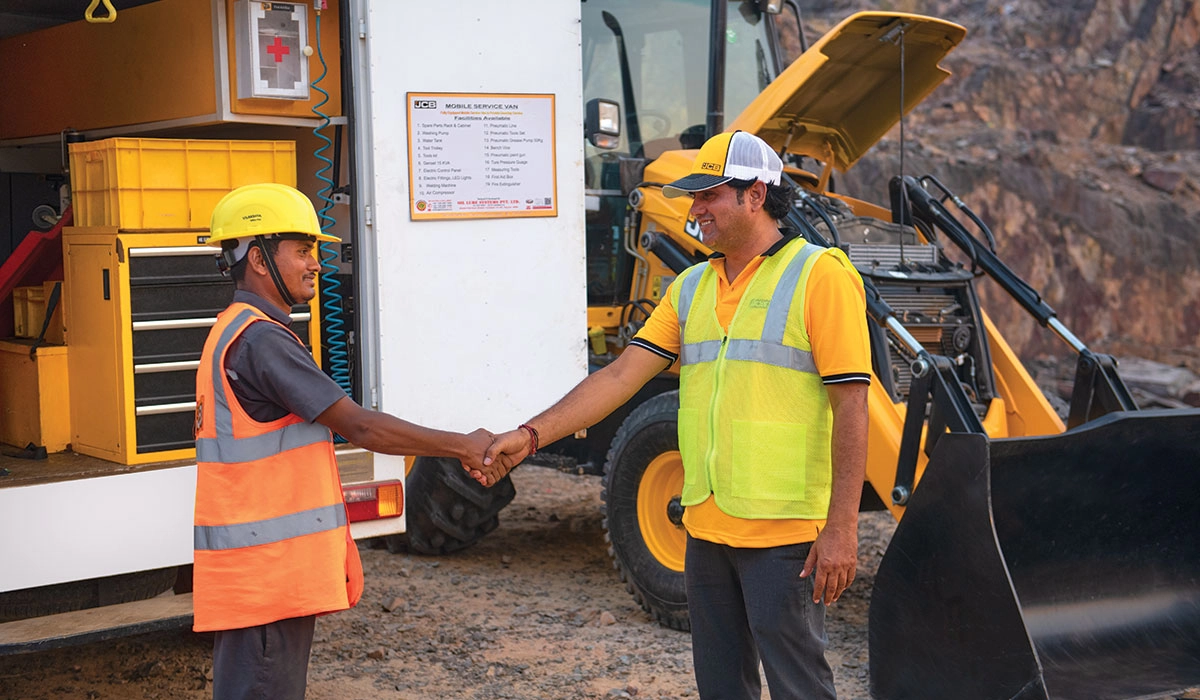
How is JCB supporting customers looking to buy BS-V equipment?
While customers want high-quality, reliable equipment, affordability and ease of ownership are equally important. That’s why we’ve made financing a key part of our customer support strategy.JCB works closely with more than 20 leading retail finance companies across the country to provide a wide range of financing solutions tailored to different customer needs. These partnerships allow us to offer special schemes such as low-down payments, longer repayment tenures, and highly affordable EMIs, which help reduce the initial financial burden and make our machines more accessible to a wider audience.
At the end of the day, our goal is to ensure that every customer—regardless of their financial background—can benefit from JCB’s advanced technology and dependable performance. Financing is not just a transaction for us; it’s part of how we build lasting relationships and support the long-term success of our customers.
What training is being provided for operators and mechanics on the new systems—like electronic controls, dashboard alerts, or diagnostics—to ensure smoother usage and fewer issues?
We currently operate 28 operator training centres across the country. These centres are strategically located to ensure accessibility and cater to the growing demand for skilled operators in the CEV sector. Every month, we train more than 400 operators, covering all key aspects of machine handling, safety protocols, maintenance procedures, and optimal usage techniques. To date, we’re proud to have trained over 50,000 operators across India. This not only enhances the productivity and lifespan of the machines but also contributes to building a more skilled and employable workforce—particularly in rural areas where such opportunities can be life-changing.Ultimately, our training programs reflect our commitment to customer success. Well-trained operators mean better machine performance, fewer breakdowns, and improved safety. It’s a win-win for our customers and for the communities we serve.
Balajee lnfratech: Manoj Dokania
▼
"Since competition is already tough in the infra segment, even the increase in backhoe loader prices due to BS-V emission norms is directly impacting the profitability of infrastructure companies like ours."
Manoj Dokania, Director, Balajee Infratech
Higher equipment cost impacting profitability
The increased capital expenditure for acquiring new equipment has led to higher initial cost investments. This higher capex translates into higher operating costs, reduced profitability, and lower return on investment (ROI), as the hire charges remain the same. Maintenance has also become more difficult and cumbersome. Since there is already tough competition in the infrastructure segment, this increase in costs further affects our profitability.Though it is a challenge, it is good for the environment, and as responsible citizens, we should all think about the environment.
Technology complexity increases breakdown risk
There are chances of lower utilization factors due to electrical and electronic failures. The potential for frequent breakdowns is high as many of operators are not qualified to rectify electrical or electronic failures. The more complex technology introduced due to emission norms may lead to higher maintenance costs and higher operating costs. Software glitches or hardware failures are quite common and often beyond human control.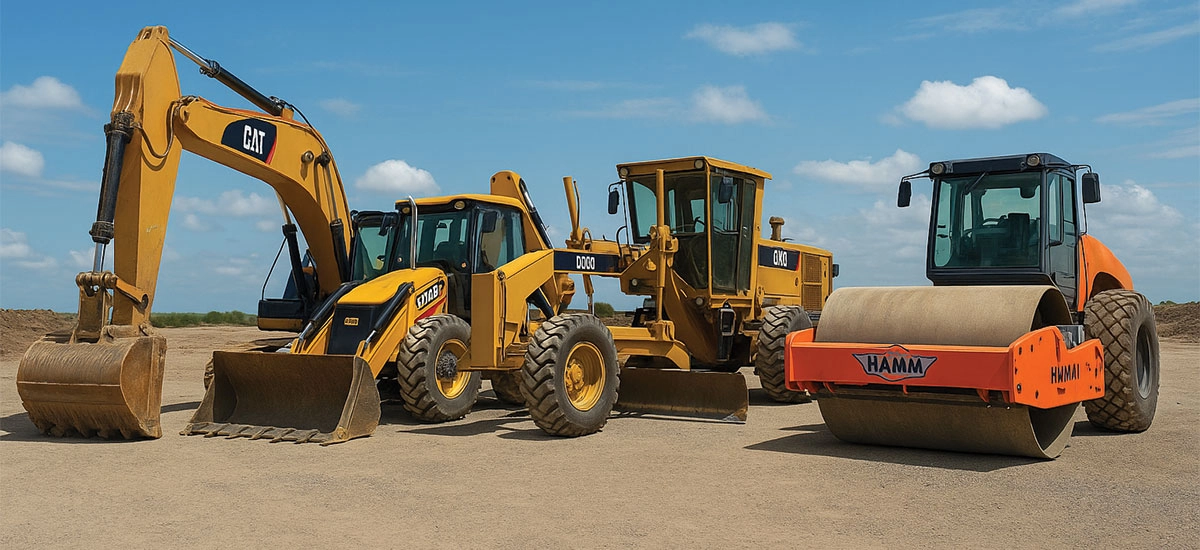
Support needed from manufacturers
Manufacturers should focus on offering better operating efficiency to reduce the unit cost of operation and output. They should provide the best warranty terms, especially due to the increased use of electronics and electrical components. Free on-site training programs for operating and maintenance staff are also crucial to minimize downtime. Manufacturers should also offer RDT tools (Remote Diagnostics & Troubleshooting) for real-time support, which can help reduce downtime significantly.
Tata Hitachi: Sandeep Singh
▼
With BS-V, we’ve combined advanced emission and safety technologies with simplified, user-friendly design, ensuring that even first-time buyers benefit from greater fuel efficiency, lower maintenance, and enhanced reliability without added complexity.
Sandeep Singh, Managing Director, Tata Hitachi
What is your outlook for the backhoe loader market in FY 2026 following the BS-V transition?
FY 2026 is expected to see a gradual recovery in backhoe loader sales as the market stabilizes and customers adapt to the BS-V norms. Growth will likely be supported by ongoing infrastructure investments, rural development initiatives, housing, and irrigation projects. Government-backed schemes and improved project execution at both state and central levels are expected to create a steady demand environment.What major changes have been made to backhoe loaders to comply with BS-V emission norms and updated safety regulations, and how do these benefit end users?
To comply with Bharat Stage-V (BS-V) emission norms and the latest safety regulations, backhoe loaders have undergone significant upgrades aimed at improving environmental performance, operator safety, and overall reliability.On the emissions side, machines now feature advanced engine technologies such as electronically controlled Common Rail Direct Injection (CRDI) systems for precise fuel delivery and optimized combustion. After-treatment systems like Diesel Oxidation Catalyst (DOC), Diesel Particulate Filter (DPF), and Selective Catalytic Reduction (SCR) have been added to reduce particulate matter and nitrogen oxide emissions. These not only meet BS-V norms but also improve fuel efficiency and reduce operating costs over time.
From a safety and regulatory standpoint, updates in line with Central Motor Vehicle Rules (CMVR) include Level 2 Roll-Over Protective Structure (ROPS) and Falling Object Protective Structure (FOPS) for better operator protection. Modern braking systems enhance control and reduce stopping distance, while redesigned cabins with larger glass areas, rearview mirrors, and optional cameras improve visibility. Features like mandatory seat belts, ergonomic seating, adequate lighting, signage, and audible alerts further support safe and efficient operation.
Together, these upgrades ensure BS-V compliant machines meet regulatory requirements while delivering greater productivity, comfort, and safety. Additional benefits include improved diagnostics, longer service intervals, and reduced downtime through proactive maintenance enabled by electronic controls. Over the long term, this results in higher machine availability, better fuel economy, and improved profitability.
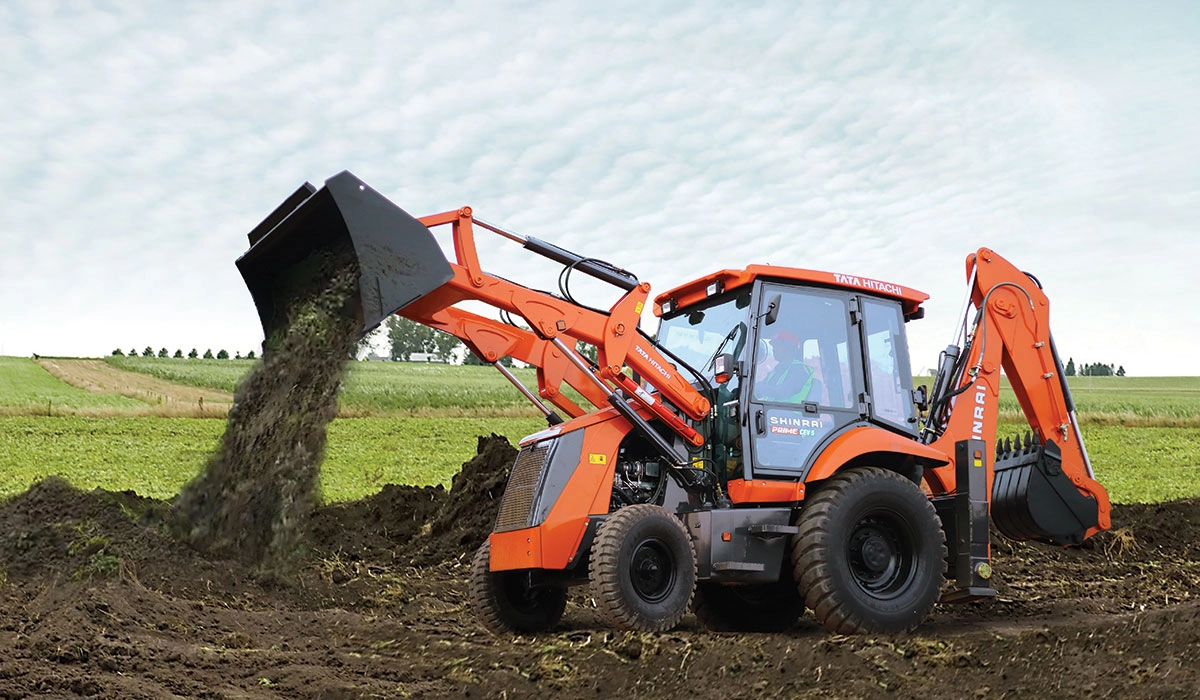
How is Tata Hitachi supporting customers in managing the increased costs and complexity associated with BS-V compliant backhoe loaders?
BS-V compliance has led to an increase in the overall cost of backhoe loaders, varying by model. To help customers manage this transition, Tata Hitachi is focusing on cost optimization across the value chain. We are offering value-added services, extended warranty coverage, and efficient after-sales support to ensure higher uptime and better returns on investment.We understand the concerns of first-time and value-conscious buyers. That’s why we are simplifying technology while maintaining our core strengths of reliability and durability. We're also strengthening our service network and ensuring ready availability of spares.
To help customers manage ownership costs, we offer maintenance packages and AMC plans. We also work closely with leading financial institutions and NBFCs to offer tailored financing solutions, including extended tenures, lower EMIs, leasing options, and seasonal repayment plans. These initiatives are designed to reduce the financial burden and make BS-V compliant equipment more accessible, ensuring a seamless transition backed by robust support and transparent communication.
Are you providing training for operators and mechanics on BS-V technologies?
Training is a core part of our BS-V rollout strategy. We conduct operator and mechanic training programs through our dealer network, at customer sites, and at our dedicated Operator Training Centres located at both our manufacturing facilities in Dharwad, Karnataka, and Kharagpur, West Bengal.
Vrundavan Group: Nitin Bhatia
▼
"While BS-V technologies have made machines smarter, they've also made them more sensitive, minor faults now trigger shutdowns, leading to costly downtime and service delays. Local mechanics can’t fix what sensors won’t allow, and that’s affecting productivity and profitability on the ground."
Nitin Bhatia, Chairman & MD, Vrundavan Group Gujarat
Sharp rise in equipment costs, flat rentals affecting business
The transition from BS-III to BS-IV led to a price increase of ₹3–4 lakhs per equipment. With the shift from BS-IV to BS-V, prices have risen by another ₹3–4 lakhs. A backhoe loader that earlier cost ₹24–25 lakhs now comes at ₹32–34 lakhs. However, rental rates in the market have remained stagnant, severely affecting profitability.Also, it’s affecting sales, buyers are hesitant to immediately purchase these new BS-V machines. In rental, companies now demand newer equipment, usually not older than 2–3 years. So, if earlier they accepted a 3-year-old equipment, now they’re asking for a newer one.
I run one of the biggest rental companies in Gujarat, with operations in multiple states and a fleet that includes 27 backhoe loaders and over 500 machines. But given the current economics, we’ve paused procurement due to a lack of viability.
Technology upgrades bringing more downtime
With the rise in electronics and sensor-based components, maintenance has become more complicated and costly. Even minor errors trigger dashboard warnings that shut down the engine. Earlier, most issues could be handled by local mechanics, but now we often need to call OEM service engineers.This leads to delays, if a complaint is raised today, the engineer might only arrive the next day or later. That results in 2–3 days of machine downtime. While technological upgrades offer benefits, they also bring challenges, costly parts, service delays, and the need for electronic diagnostics have increased the complexity and expense of repairs.
Expectations from manufacturers: pricing, training & support
We’ve consistently urged manufacturers to reconsider pricing strategies. For instance, I recently negotiated on a soil compactor that saw a ₹2–3 lakh hike, despite no change in productivity or compaction strength compared to the BS-IV model. The truth is, productivity hasn’t increased just because it’s a BS-V machine, so our rental income remains the same.We also expect manufacturers to offer better training. While I’ve already trained my operators both on-site and at training centers, it would be helpful if OEMs provided training at the time of sale, for both operators and supervisors. Proper training would reduce downtime and improve cost efficiency.
We've also suggested a toll-free helpline so that operators can quickly get support for minor errors, like engine heating or dashboard alerts, without waiting days for a service engineer.
Another pressing concern is the frequent model updates, which negatively impact resale value. A machine that cost ₹30–35 lakhs today might not fetch more than ₹14–16 lakhs in resale, even if it's just a few years old. We’ve requested that manufacturers introduce a buyback program or help with resale to support rental companies. Without reasonable resale value, there’s little incentive to invest in new equipment.
CASE: Puneet Vidyarthi
▼
Our CEV Stage-V compliant NX-Series is not only cleaner and more fuel-efficient—it’s engineered to deliver up to 20% better fuel economy, helping customers offset higher upfront costs while boosting productivity and profitability on Indian job sites.
Puneet Vidyarthi, Head of Brand Marketing, CASE Construction Equipment - APAC & India
How is CASE Construction Equipment addressing the challenges and opportunities arising from the BS-V (CEV Stage V) transition in the backhoe loader market?
The backhoe loader market experienced a period of adjustment due to pre-buying ahead of the CEV Stage V emission norms and the subsequent price increases. While this led to a temporary slowdown in demand, it has created a foundation for recovery. We expect steady growth in FY 2026, supported by ongoing infrastructure investments through initiatives like the National Infrastructure Pipeline and PMGSY.One significant challenge under the new emission thresholds is the impact on sub-50HP models. These machines now require emission control systems similar to those used in 74HP models, resulting in a price point that could make them less viable compared to their higher-horsepower counterparts under CEV-IV norms. To address this, CASE has introduced an innovative dual power curve in a single machine, offering the benefits of both power segments in one vehicle.
CASE Construction Equipment is well prepared to meet the evolving market needs with our CEV Stage-V compliant NX-Series, designed and manufactured in India. These machines offer enhanced fuel efficiency, high productivity, and reduced emissions, perfectly suited for local conditions. Backed by robust manufacturing and training infrastructure, we remain committed to supporting our customers and contributing to India’s infrastructure development.
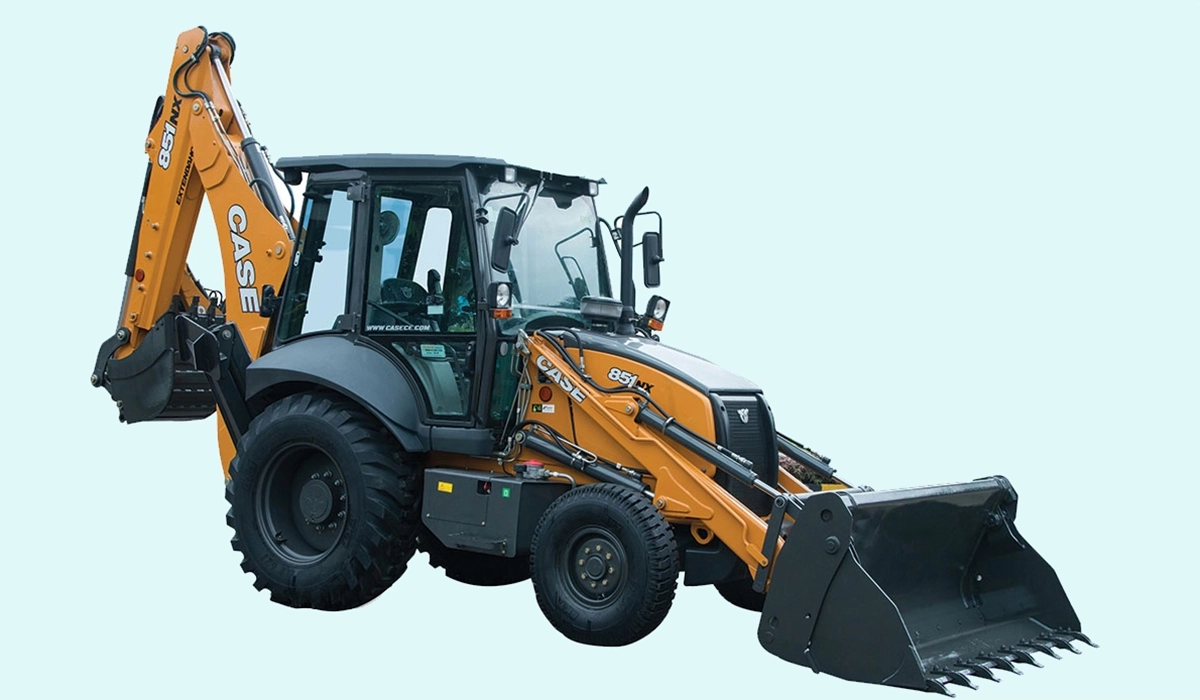
What key advancements has CASE India introduced in its backhoe loaders to comply with CEV Stage-V norms, and how do these benefit users?
The transition to CEV Stage-V emission norms has brought significant upgrades to backhoe loaders, particularly in emissions control. CASE India’s 770NX is equipped with the advanced FPT F28 engine featuring DOC and DPF after-treatment systems, which meet stricter particulate matter (PM) and particulate number (PN) limits, unlike the earlier 770EX model that complied with CEV Stage-IV norms using only a DOC. These improvements result in much cleaner emissions and improved fuel efficiency, allowing operators to save approximately 1.5–2 liters of diesel per hour.To align with new safety standards, the 770NX also features a redesigned cabin with near 360° visibility, ergonomic controls, and reduced noise levels inside and outside the cabin. It now complies with several safety and regulatory requirements including ROPS-FOPS (Roll-over and Fall-over Protection Structure), EMI-EMC (Electromagnetic Compliance and Immunity), and improved operator ergonomics and reach.
Additional enhancements include a new colored LED instrument cluster with smart audio-visual alerts, an engine protection shutdown system, auto-idle and auto-shutdown logics, and a secure battery cut-off switch. The machine also comes integrated with the myCASE Construction telematics platform, enabling real-time monitoring and predictive maintenance.
With these advancements, the 770NX is not just emission-compliant, it’s also more efficient, safer, and fully equipped to meet the demands of modern Indian job sites.

How is CASE India helping customers manage the cost impact of transitioning to CEV Stage-V compliant equipment?
India’s construction equipment sector is moving toward cleaner technology with the implementation of CEV Stage-V emission norms, an important step for environmental sustainability. However, this shift has led to a cost increase of around 12–15%, primarily due to advanced engines and emission control systems. This can be particularly challenging for small contractors and first-time buyers who must manage tight budgets.To mitigate this impact, CASE India has introduced CEV Stage-V compliant machines that are manufactured using locally sourced components. For example, the CASE 851 NX backhoe loader is being localized and produced at our upgraded Pithampur plant. This not only helps control costs but also aligns with the government’s ‘Make in India’ initiative.
Through our in-house retail finance company, CNH Capital, we offer customized financing solutions with flexible repayment options and assistance in availing government subsidies to reduce the initial investment burden. We’re rolling out cost-effective service and maintenance packages to further lower operating expenses.
How do CEV Stage-V compliant machines offer better fuel efficiency and cost benefits compared to previous generations?
With the introduction of CEV Stage-IV, the market had already transitioned to electronic engines, so that shift is now well understood. CEV Stage-V brings in stricter emission controls, requiring exhaust after-treatment systems that include a particulate filter in addition to DOC-type catalytic converters.CASE’s NX Series machines feature built-in intelligence in both hydraulics and fueling controls, enabling smarter fuel management, improved combustion, and higher overall operating efficiency. Depending on the machine type and usage, customers can see fuel efficiency improvements of up to 20% compared to the previous generation. Over the machine’s lifecycle, this results in substantial savings, particularly for high-utilization customers, helping offset much of the initial cost increase. When combined with reduced emissions, lower maintenance needs, and extended service intervals, the total cost of ownership becomes more favorable in the long term.
Our Stage-V machines are equipped with advanced technology aimed at boosting fuel efficiency, durability, and smoother operations, extending equipment life and improving total cost of ownership. To support long-term value, we’ve also introduced the ‘Fleetpro’ range under our Value Line of parts and lubricants, delivering OEM-grade quality at more economical prices.
Together, these initiatives ensure that the shift to Stage V is not only environmentally responsible but also a practical and profitable investment for our customers.
Nish Earthmovers: Tarun Dutta
▼
"The continuous increase in machine price due to changing norms, combined with stiff competition and strict regulations, has made rental equipment business very challenging."
Tarun Dutta, Owner, Nish Earthmovers
Emission norms driving machine cost upward
With every transition in emission norms, from BS III to BS IV and now BS V, the cost of backhoe loaders has kept increasing. In just the last two years, the price has gone up by ₹5–7 lakh, and today a machine costs over ₹33 lakh. But unfortunately, while the machine cost keeps rising, the rental rates have not increased at the same pace. When I started this business back in 1993, the machine cost was around ₹9 lakh and we were charging ₹550 per hour. Now the rental rates are around ₹700 per hour, but the cost of diesel has also gone from ₹10-15 per litre to nearly ₹100, and competition has become extremely tough.The biggest challenge is that many newcomers are entering the rental market and offering very low rates, which is spoiling the market for established players. Because of these rising costs and market pressures, I’ve completely stopped purchasing new machines in the last two years. Instead, I’ve supported 15 of my supervisor-operators to become machine owners themselves by financing them.
Another major issue is that in Delhi, because these are diesel-operated machines, the government only allows a backhoe loader to operate for 10 years. Technically, if well-maintained, these machines can easily work for 15–20 years. But after 10 years, you can't run them in Delhi, which makes it even more difficult to recover the high machine cost.
Today, profitability is shrinking for rental players like us. Big companies are no longer purchasing backhoe loaders; only small vendors are buying now. The continuous increase in machine price due to changing norms, combined with stiff competition and strict regulations, has made this business very challenging.
Market driven by rates, not technology
Actually, the problem in the Indian market is that most customers focus only on rates, not on quality. Everyone wants a cheaper rate. When we approach big companies like Tata or L&T, they show us the rates they are getting from other suppliers and ask if we can match those while still providing a good, technically sound machine with the best output. Their rates are fixed, so even if the technology is better, they are not ready to pay extra for it.In general, we don't give enough importance to technology. When manufacturers use advanced technology, it’s mainly for their own brand value, they promote that they have better machines. But for companies, the real profit comes not from selling machines but from after-sales services and spare parts. This is where dealers also play a big role.
I believe that machines should have some level of technology, like sensors to monitor overheating or other issues, but not too much electronics. The problem with highly electronic machines is that we don't have enough local mechanics who can handle them properly. This makes after-sales service a big challenge.
Need for on-site training and better service support
First, manufacturers should come directly to big rental companies or large fleet owners and train their staff at the site itself. Right now, they conduct training at their offices or factories. But in such a competitive market, we don’t have the luxury to send our operators for 5–6 days for training at the factory. There’s always a risk, today an operator is with us, but tomorrow he may leave for another company offering ₹2000 more. So we don’t want to invest heavily in training someone who might not stay. That’s why I believe the manufacturers should train operators, mechanics, and supervisors at the site itself, how to maintain the machine, how to fix basic issues, that would be very helpful for owners like us.When it comes to price increases, honestly, we can’t fight with manufacturers. They are like big bulls; we don’t have any option but to buy from them. Pricing decisions are made at the top management level, who only look at profitability. So, rather than discussing price, I believe manufacturers should support customers in other ways like training, maintenance guidance, and better cooperation.
Another big issue is after-sales service. Purchasing is one part, but when the machine breaks down, that’s where the real problem begins. We have a fleet of over 300 machines - scissor lifts, boom lifts, excavators, long booms, piling rigs, etc. When a machine breaks down, customers call our supervisors or even directly call me, the owner. That’s why I feel manufacturers must focus more on after-sales service for faster response, better service support, and availability of reasonably priced spare parts.
Escorts Kubota: Sanjeev Bajaj
▼
To lessen the impact of the higher cost of BS-V backhoes, we have made changes related to fuel efficiency, cycle times, operational reliability, reduced maintenance cost and time, thereby improving our customer’s productivity per liter of diesel consumed.
Sanjeev Bajaj, Chief Officer, Escorts Kubota
FY 2025 has been relatively flat for backhoe loader sales with a little over 50,000 units sold—mainly due to pre-buying ahead of the BS-V rollout from Jan 2025, which led to price hikes (7–8% for standard models, and 12–15% for sub-49HP BS III machines). Given this background, how do you see FY 2026 shaping up? What factors do you think will drive demand?
Whenever there is a price revision we have seen pre-buying and then a brief slowdown post the price change implementation. However, due to the change in the emission norms, the extent of additional cost to customer is higher and thus in short to medium terms it will impact the economics of rental customers. Unless the demand is considerably higher in the coming months, there will be pressure on sales volumes in domestic markets and it will take at least the first half of FY26 to smoothen out.Demand for BHLs will be driven by the positivity in rural economy, the progress of execution of ongoing infra projects and the flow of funds to the newly announced capex initiatives. Manufacturers will also bring our discount offers and easy buying options during the early months of FY26 to support the changeover and help customers decide on buying new equipments.
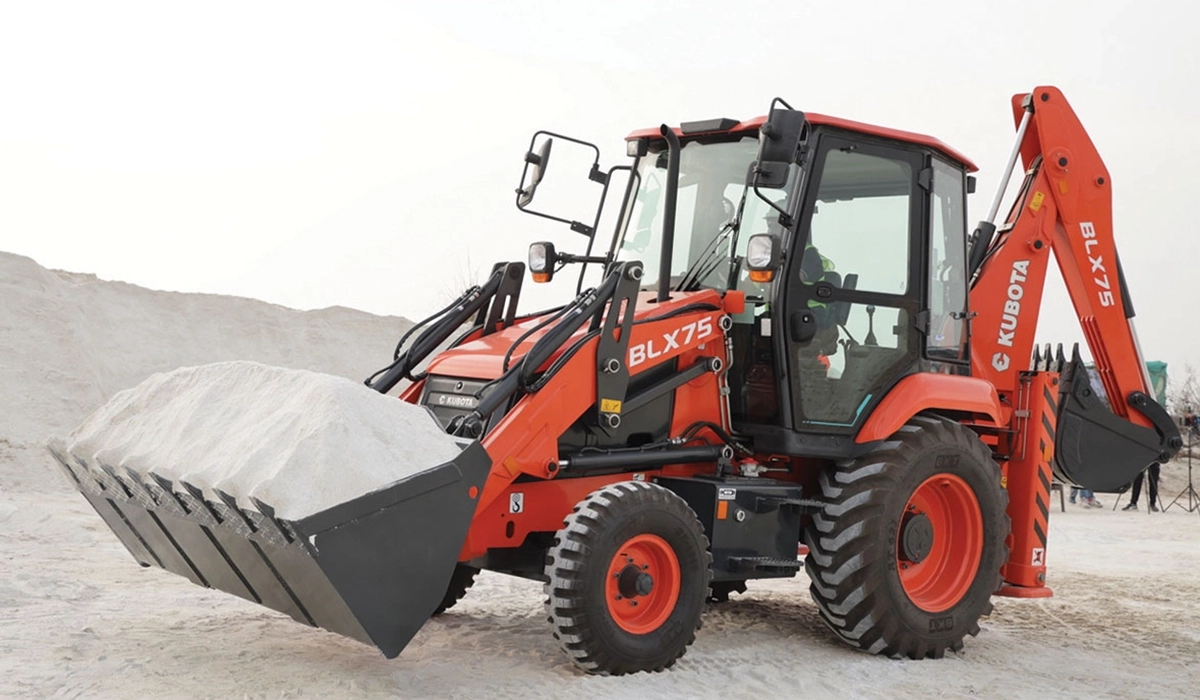
What changes are being made in backhoe loaders to comply with BS-V emission norms and the newly implemented safety standards?
The new emission norms align with global standards and include reduced emission limits for pollutants like particulate matter (PM) and particulate number (PN). The emission change can be bifurcated into two segments:- Appropriate modifications in the exhaust after-treatment system with the integration of a Diesel Particulate Filter (DPF) to effectively reduce particulate matter (PM) emissions.
- In under 75hp models, the Diesel Particulate Filter (DPF) is added, over and above the Diesel Oxidation Catalyst (DOC). Escorts Kuboto operates in this segment with its 74hp BHL model.
- Escorts Kubota Limited operates in this segment with its 74hp Backhoe Loader (BHL) model. For models under 75hp, a Diesel Particulate Filter (DPF) is integrated in addition to the Diesel Oxidation Catalyst (DOC). In models above 75hp, the emission control system includes the DPF and DOC as in the lower-powered models, with the addition of Selective Catalytic Reduction (SCR) using the AdBlue system for further emissions management.
What is the overall cost impact of BS-V machines on customers, and what steps are you taking to balance out this increase?
The CEV-V product upgrades are expected to increase the equipment cost by around 6-8% for vehicles transitioning from BSIV and even higher for lower hp BSIII models. We have, however, taken this opportunity to completely revamp the product platform and make changes related to fuel efficiency, cycle times, operational reliability, reduced maintenance cost and time, thereby improving productivity per litre of diesel consumed. The idea is to reduce Cost of ownership for customers for accommodating technological upgrade in this case is change in emission norms from BS IV to BS V. We have persisted to our goal of creating value for our customers, thereby offering more for less cost impact.Many backhoe buyers - especially first- and second-time users (who make up around 70% of the market), are concerned about the increased machine and parts costs, sensitive fuel systems, and more electronic components that could be prone to failure. How do you address these concerns?
The government's emphasis on environmental protection and human safety makes the transition to CEV-V a transformative step. However, it does come with higher upfront costs, which can be financially challenging. In the long run, though, the use of high-reliability electrical components with an IP67 rating, straightforward on-board machine diagnostics, and standardized telematics for improved uptime and error code reporting etc, are benefits to customers as they will lead to higher productivity.We have also introduced changes related to fuel efficiency, cycle times, operational reliability, reduced maintenance cost and time, thereby improving overall productivity per liter diesel consumed. Efforts have been made on extensive testing and improving component level reliability including the electrical and electronic circuits. We have planned operator training modules and installation guidelines to make the transition easier. We believe there are benefits to be had from the new equipment standards and customer education is the key for our industry.
What’s more, the BS-V compliant machines benefit users in terms of productivity, profitability, uptime, and equipment availability. CEV-V machines equipped with electronic engines can connect to company servers via telematics, allowing for faster diagnostics and problem resolution, which should enhance machine availability and ultimately boost profitability. Furthermore, these electronic engines provide greater output per liter, while advancements in hydraulics lead to increased productivity.

As India pushes for cleaner energy solutions, manufacturers are exploring alternative fuels for construction equipment. What steps are you taking to integrate alternative fuel options in the BS-V backhoe loaders?
In line with the Government’s vision of carbon neutrality, the construction equipment industry needs to step up its efforts in this direction. There are already few technologies being tested, some being demonstrated and also being tried out with specific customer applications. We believe that all these efforts will turn into a reality over the next 3-4 years when the technologies become commercially viable for mass scale application.We are also in various stages of development and testing of cleaner energy solutions on our range of products and would introduce them when our customer’s business environment is ready for such solutions.
What financing, leasing, or subsidy options is the company offering its customers?
Escorts Kubota Limited is working with partner financiers and our in-house finance organization Escorts Kubota Finance Limited, to support our customers by offering special interest rates, higher LTV, buyback options, longer loan durations, insurance, etc.There is a need for our customers to have lower EMIs while the rental rates have been largely constant and equipment owning costs are up. We are aware of these customer needs and are making all efforts to support them with innovative financing options.
How do BS-V service intervals, man-hours, and replacement-part costs (especially for emission-related components) compare with previous generation machines?
Various strategies have been experimented with and are being offered to customers on reducing their maintenance cost. Longer change intervals, improving change capacities, shifting first change to as later as possible to offer working modes and engine idling modes, help reduce fuel consumption as well as the machine’s wear and tear. These efforts will continue and innovation will drive the product’s design, making the machines more and more efficient.What training is the company providing for operators and mechanics on the new systems, like electronic controls, dashboard alerts, or diagnostics, to ensure smoother usage and fewer issues?
Escorts Kubota Limited is providing is providing training for operators and mechanics on the new systems mentioned, which is essential for ensuring maximized machine uptime. The training typically includes:- Hands-on Workshops: Practical sessions where operators and mechanics can familiarize themselves with the new systems.
- Documentation and Manuals: Comprehensive parts catalogues & operator manual guides on system functionalities, troubleshooting steps, and maintenance procedures.
- Online Training Modules: E-learning resources that can be accessed any time, covering key aspects of the new systems.
Aarpee lnfraprojects: Atul Agarwal
▼
"BS-V backhoe loaders are technically superior, but for owners like us, the cost jump and tighter financing have made operations more challenging. We need OEMs to share the load, through better AMC packages, easier financing, and strong on-ground service."
Atul Agarwal, Ex CEO, Aarpee Infraprojects
Emission norms and the shift to cleaner technology
The transition from BS III to BS IV in backhoe loaders marked a significant move towards reducing pollutants like nitrogen oxides (NOx) and particulate matter (PM). This has led to the adoption of newer technologies, including larger and more powerful catalytic converters such as the Diesel Oxidation Catalyst (DOC). While these changes offer environmental benefits, they have also increased equipment costs for manufacturers and impacted cash flows for equipment owners.Overall, the shift to BS IV, and now BS V, is a positive step for cleaner air quality, but it has introduced cost and market challenges that both manufacturers and consumers must now navigate.
Rising costs and their impact on business
The cost of a backhoe loader has increased by ₹5–7 lakh due to the transition from BS III to BS V norms, creating considerable financial pressure. Buyers now face a much higher capital expenditure per machine, making the initial investment a bigger hurdle. The return on investment has been delayed by 6 to 12 months because of the increased EMI burden and rising operational costs.Margins have also tightened significantly, especially in the rental and subcontracting segments where rental rates haven’t risen in proportion to the cost of the machines. This has led to margin compression of nearly 10–15%. Financing has become more difficult, particularly for smaller contractors, who either struggle to get loans or must make higher down payments. Non-Banking Financial Companies (NBFCs) are also cautious in lending under the new norms, further tightening cash flow and liquidity.
Support expected from manufacturers
To reduce the financial burden of this transition, manufacturers need to step up support in both technical and financial areas. On the product side, OEMs should offer 1–2 years of free Annual Maintenance Contracts (AMC) to offset the higher upkeep costs of BS IV/V engines. Regular on-site service camps, especially in Tier 2 and Tier 3 cities or remote project locations, would help reduce downtime and increase uptime reliability.Availability of genuine spare parts at reasonable prices is also crucial for controlling long-term operational costs. Additionally, training programs for operators and mechanics on handling systems like DPF (Diesel Particulate Filter), DEF (Diesel Exhaust Fluid), and SCR (Selective Catalytic Reduction) can prevent mishandling and reduce the chances of breakdowns.
On the financial side, flexible financing schemes with longer tenure EMIs, low down payments, or balloon payments would ease the pressure of upfront investment. Buyback guarantees after 3–5 years would help reduce the resale risk and improve buyer confidence. Lease or rent-to-own options would be especially useful for small contractors who cannot invest ₹35–40 lakh in one go. OEMs can also offer zero-interest or deferred EMI plans to help contractors navigate through lean project cycles or seasonal slowdowns.
Concerns about electronics and maintenance
The increasing reliance on electronics, sensors, and electrical components in newer machines has raised widespread concern. While these features bring operational advantages and improved emission control, they also come with a higher risk of breakdowns and expensive repairs.Unlike BS III machines that could often be serviced by local mechanics, the newer models now require OEM-authorized servicing for many components. Parts such as sensor kits, DPFs, and ECUs are expensive, ranging from ₹25,000 to ₹1,00,000 depending on the type, and not easily available in local markets. Moreover, downtime caused by recalibration or regeneration procedures can bring jobsite operations to a standstill, making timely support from OEMs and a predictive maintenance approach even more essential.
ACE: Manish Handa
▼
Our BS-V compliant backhoe loaders are designed with today’s market realities in mind, where rental rates and contractor fees have remained largely stagnant. By combining higher fuel efficiency, reduced maintenance costs, and competitive pricing, we’re ensuring that our machines remain affordable, profitable, and practical for value-conscious buyers.
Manish Handa, Vice President – Earthmoving Equipment Division, ACE
How do you view the current state of the construction equipment sector and the outlook for backhoe loaders in FY-26?
The overall growth in the Indian construction equipment sector has remained modest, impacted by both micro and macroeconomic challenges. Despite this, Action Construction Equipment Ltd. (ACE) has delivered resilient performance by offering end-to-end solutions that meet customer needs while ensuring savings in both upfront and operational costs.Looking ahead, we remain optimistic. The government's continued focus on infrastructure development, along with a healthy monsoon and rising rural demand, is expected to drive sector growth in the second half of FY-26. We are confident about the expanding market for backhoe loaders and are well-positioned to capitalize on this momentum.
How has ACE upgraded its backhoe loaders to meet BS-V emission norms, and what benefits do these machines offer in terms of performance, fuel efficiency, and maintenance?
With the introduction of BS-V emission norms, all ACE machines have been comprehensively upgraded to ensure full compliance. This includes advanced emission control technologies such as Diesel Particulate Filters (DPF) and smart sensors to monitor and reduce harmful emissions like Nox, demonstrating our commitment to environmental responsibility and regulatory standards.We’ve also used this transition as an opportunity to enhance our machines across key areas—comfort, safety, performance, and aesthetics. The BS-V models feature a stronger, heavier machine structure for improved durability on rugged job sites. ROPS and FOPS-certified cabins have been further reinforced to provide a safer, more secure environment for operators.
Powered by the robust TATA 497, 74 HP BS-V compliant engine, the ACE AX124 Backhoe Loader delivers 15% higher fuel efficiency compared to our BS-IV models. With an impressive torque of 345 Nm and a Carraro axle transmission system, it ensures smooth power delivery even on challenging terrains—making it ideal for a variety of working conditions. This improvement translates to annual fuel cost savings of approximately ₹2 lakhs, allowing customers to recover the incremental BS-V cost within the first year of operation.
The BS-V upgrade has enabled us to significantly improve service intervals, reduce man-hour requirements, and lower maintenance costs. The 500-hour engine service interval standard in earlier machines has been eliminated. Advances in filtration and lubrication have extended oil and filter change intervals for transmission and axle systems, leading to nearly a one-third reduction in maintenance frequency and costs. Overall, there is a 10% reduction in total maintenance expenses, contributing to lower operating costs and reduced downtime, helping customers maximize efficiency and productivity.
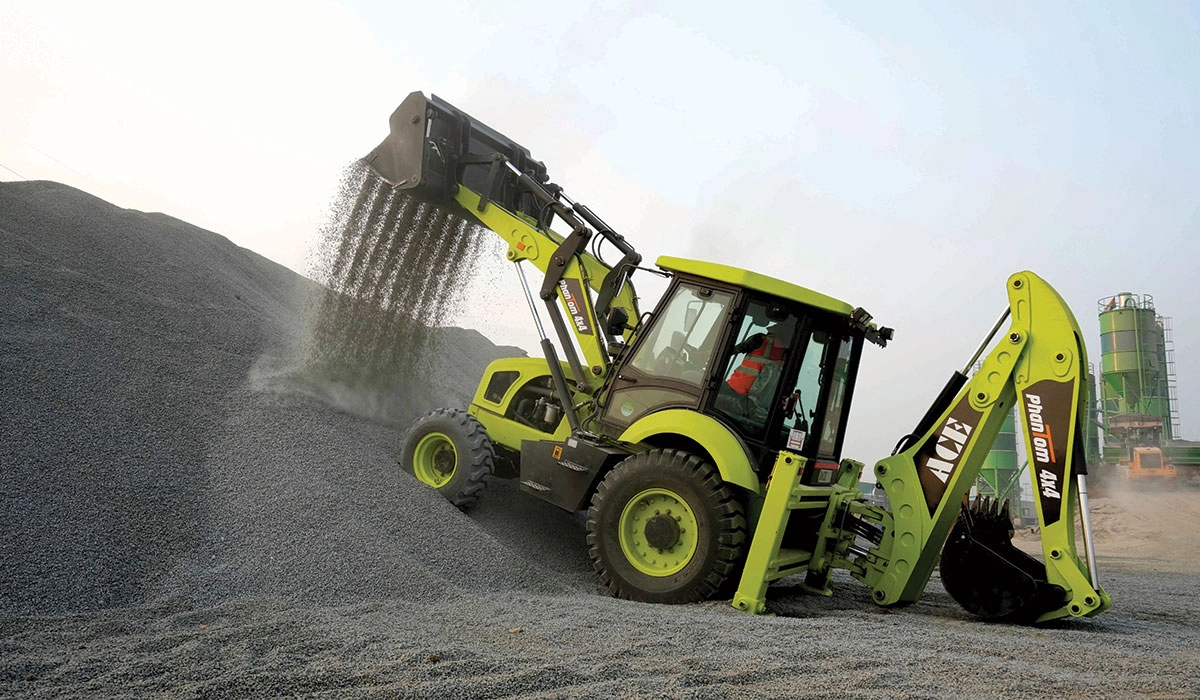
How is ACE ensuring affordability and value for money for backhoe loader buyers, especially first-time and cost-conscious customers?
As a customer-centric organization, our core philosophy is to deliver value-for-money products that offer high productivity at a competitive price. Our backhoe loaders are designed keeping today’s market conditions in mind, where rental rates and contractor fees have largely remained stagnant. We understand the importance of managing EMIs, maintenance, and operator costs, especially for first-time and second-time buyers.ACE machines address this need by offering one of the lowest owning and operating costs in the industry. Our products are priced approximately 10% more affordably than peers, with an additional 10% savings in running and maintenance costs. This enables users to not only manage their monthly EMIs and expenses more efficiently but also generate profits. This strong value proposition makes ACE backhoe loaders a smart and cost-effective choice for today’s construction demands.
To further support our customers, ACE has partnered with leading banks and NBFCs to provide customized financing packages. These solutions are tailored to diverse customer needs, simplifying the purchase process, improving affordability, and supporting business growth.
What steps has ACE taken to train operators and ensure optimal machine performance and service efficiency?
At ACE, we are strongly focused on training and skill enhancement for our operators. We have established dedicated on-field training facilities supported by a structured training calendar to ensure regular skill upgradation and technical development.Our operators are trained thoroughly and equipped with advanced diagnostic tools and specialized service kits, enabling them to carry out accurate diagnostics, efficient servicing, and effective preventive maintenance. With this robust training infrastructure and proactive approach, we ensure that our workforce is fully prepared to maintain peak machine performance, reduce downtime, and deliver superior service to our customers.
Harsh Constructions: Jayawant Birari
▼
"While we fully support the move towards cleaner technologies, we believe greater collaboration between OEMs, financial institutions, and policy makers is necessary to ease the financial transition for end-users like us."
Jayawant Birari, Joint Managing Director, Harsh Constructions
Emission norms raise costs, limit fleet expansion
The shift from BS III to BS IV and now BS V emission norms has resulted in a cost increase of ₹5–7 lakh per backhoe loader. This substantial hike has had a direct impact on our capital investment and profitability.With tight project budgets and growing competition, absorbing this cost without affecting operational efficiency is a real challenge. It also slows down procurement decisions and fleet expansion, particularly in small- and mid-scale projects. While we fully support the move towards cleaner technologies, we believe greater collaboration between OEMs, financial institutions, and policy makers is necessary to ease the financial transition for end users.
How OEMs can support contractors
To mitigate the cost impact, we look forward to stronger support from manufacturers. Flexible financing and lease options would help reduce capital strain, while extended warranty and AMC packages would offer long-term peace of mind. Buyback or exchange programs for upgrading older machines would ease the transition to newer models.Availability of spare parts and deployment of local service teams are also critical to reducing downtime. Regular operator and technician training can ensure safe and efficient use of these advanced machines. Such measures would significantly help contractors in managing the rising costs while maintaining productivity and reliability on-site.
Confidence in after-sales support for tech-driven machines
The increased use of electronics, sensors, and telematics in modern backhoe loaders initially raised concerns around potential breakdowns and higher maintenance costs. However, after detailed discussions with our equipment partners, we are reassured by the strong after-sales and service infrastructure in place.We have been assured of fast and efficient service support, even in remote locations, along with a well-stocked parts inventory for timely replacements. Technicians are trained in advanced diagnostics and electronic systems, which has given us the confidence to embrace the next generation of machines with minimal concern for operational disruptions.
Caterpillar India: Amit Bansal
▼
We introduced our BS-V compliant backhoe loader as early as 2021, and some machines have already crossed 18,000 hours without issue. This proves that early adoption, durability, and low lifecycle costs can go hand in hand with sustainability and compliance.
Amit Bansal, Director, Sales & Marketing, Building Construction Product (BCP) Division, Caterpillar India
What is your outlook on the backhoe loader market in India amid the BS-V transition?
India is poised for strong long-term growth, and the outlook for the backhoe loader market remains positive. The infrastructure sector is witnessing unprecedented expansion, driven by rapid urbanisation and growing demand for affordable housing. The government’s focus on developing smart cities, tunnels, railways, dams, and ports is set to enhance connectivity and accelerate economic progress.While the market may face some short-term fluctuations due to the increased cost of technology required to meet BS-V emission norms, the overall demand will remain strong. The added costs may create temporary softness until pricing stabilises, but in the long run, the sector’s growth momentum will continue to drive equipment demand.
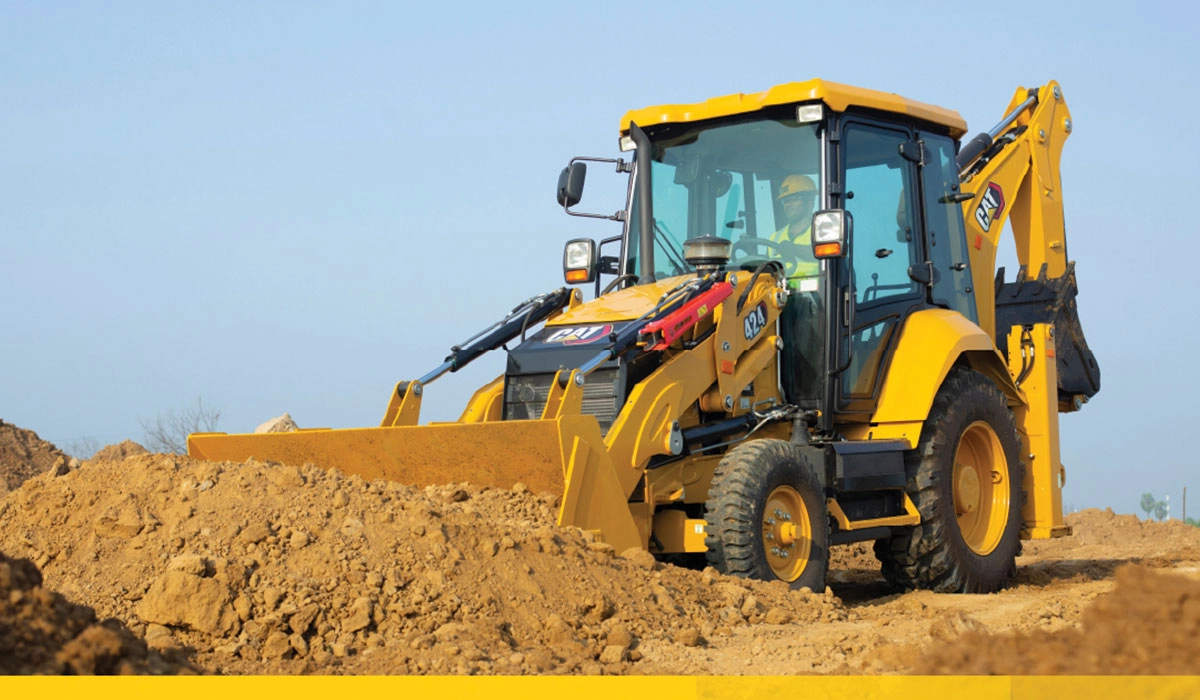
How has Caterpillar India approached the BS-V transition, and what sets your machines apart in terms of safety, sustainability, and value?
We were the pioneers in introducing CEV Stage V compliant machines and ROPS & FOPS compliant cabins in India, even before these features were mandated by regulations. In fact, we launched our CEV Stage V compliant backhoe loader as early as 2021, and there has been minimal cost impact on us.This early adoption showcases our strong commitment to safety and sustainability. Some of our machines have already logged over 18,000 hours in the last four years without any issues, demonstrating the durability, build quality, and endurance of Caterpillar equipment. Such long machine life not only supports sustainability but also delivers the best value to customers across the equipment’s lifecycle.
What key improvements have been made in the BS-V compliant CAT 424 backhoe loader, and how do they benefit the customer?
The CAT 424 backhoe loader, now equipped with a BS-V compliant engine, brings significant advancements in reliability, durability, productivity, and efficiency. The transition to higher emission norms not only supports environmental sustainability but also raises overall machine standards.Caterpillar has focused on reducing the total cost of ownership through several design enhancements. The engine oil quantity has been optimized, reducing lubrication oil requirements by 40%, while the oil filter change interval has been doubled, resulting in fewer service intervals, less downtime, and lower maintenance costs.
Fuel system enhancements include a non-metallic fuel tank and a self-priming system for easier maintenance and improved reliability. A water-in-fuel separator with both visual and electronic alerts protects fuel injectors from contamination, extending engine life and overhaul intervals.
The machine features a Diesel Particulate Filter (DPF) that captures particulate matter from exhaust gases. Unlike some systems, Caterpillar’s DPF does not require Diesel Exhaust Fluid (DEF), offering a clear cost and logistical advantage. It is also designed for long service intervals and uses proprietary active regeneration technology to burn off soot without operator input, ensuring consistent performance, even in low-load or idle-heavy conditions.
Intelligent electronic controls optimize engine parameters in real time, enhancing fuel efficiency, reducing wear, and further lowering maintenance costs over the machine’s lifecycle.
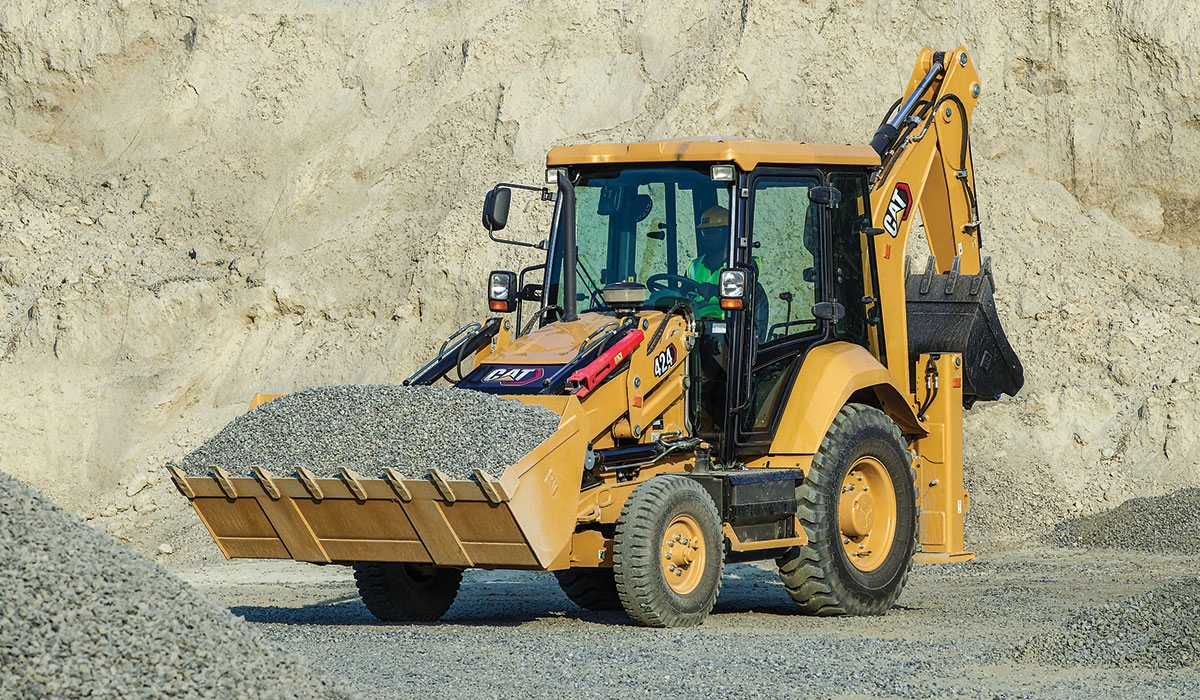
What kind of product support and financing solutions does Caterpillar India offer to help customers throughout the lifecycle of their equipment?
As a company, we are committed to understanding our customers' needs and helping them achieve optimal product and jobsite energy lifecycle. To support this, we offer Aftermarket Performance Customer Value Agreements (CVAs), which ensure hassle-free service at any point in the machine’s lifecycle. These include planned maintenance using genuine Cat parts, dealer technician support, and fluid health management to identify issues early and reduce unexpected downtime. Customers can reach out to their local Cat dealer to learn more about CVAs and available offers. Our long-standing dealer partners, Gainwell Commosales India Pvt Ltd (GCPL) and Gmmco Ltd, are fully equipped with technical expertise, training, and the latest updates to provide reliable support.We also offer comprehensive solutions that combine product technology, financing, and aftermarket services. Through Cat Financial, we help customers make the best choices for their business, whether they need new or used machines, or financing for repairs and rebuilds. Cat Financial provides retail and wholesale financing, extended protection products, and working capital solutions tailored to each customer’s needs. From equipment purchase to protection, management, and resale, we offer quality support throughout the entire equipment lifecycle.
How is Caterpillar supporting sustainability and helping customers meet their climate goals through its products and technologies?
Caterpillar is contributing to a reduced-carbon future by investing in new products, technologies, and solutions that help our customers achieve their climate-related objectives. We’ve committed that 100% of our new products through 2030 will be more sustainable than the previous generation.Sustainability is embedded in the design, manufacturing, and delivery of everything we do. It is a key part of our technology development strategies and New Product Introduction (NPI) process. Through focused R&D efforts, we continue to develop more sustainable products and services.
Many Caterpillar machines are compatible with lower-carbon intensity fuels such as biodiesel, renewable diesel, and biogas. While tailpipe GHG emissions are similar to those from traditional fuels, these alternatives significantly reduce lifecycle emissions across the fuel value chain.
CERA/Equipment Planet: Satin Sachdeva
▼
"The steep increase in machine prices due to BS-V norms, combined with stagnant or falling rental rates, is threatening the long-term viability of the rental business in India."
Satin Sachdeva, Founder and Secretary General, CERA (Construction Equipment Rental Association), MD, Equipment Planet and Evalue
Mounting costs, shrinking margins
The shift to stricter emission norms, though a step forward for environmental sustainability, has placed considerable strain on the construction equipment rental business in India. With the transition from BS III to BS IV and now BS V, the cost of machines like backhoe loaders has surged by ₹5–7 lakh. Unfortunately, this steep increase in capital expenditure has not been accompanied by a corresponding rise in rental rates. In fact, rental prices have remained stagnant and, in some cases, have even declined.Operating margins, already minimal in the rental sector, are now being further squeezed by rising costs of spare parts, tyres, lubricants, and other consumables. The emission control components required under the new norms are not only costlier but also more complex and sensitive. This has led to a rise in breakdowns, particularly under tough site conditions, causing increased maintenance downtime and expenses.
Another pressing issue is the oversupply of equipment in the market. The influx of rental players in recent years has intensified competition, often pushing rental rates below sustainable levels. Construction companies are capitalizing on this scenario to drive down pricing and dictate contractual terms, leaving little room for rental businesses to negotiate or maintain profitability.
The rising cost of skilled manpower and trained operators has added to the financial burden, further eroding margins. In this scenario, where costs are climbing but rates are dropping, the long-term viability of the rental business is under significant threat. Even the banks’ rate of interest has increased significantly in past years, further eroding margins. Unless there’s an industry-wide correction in pricing practices and more balanced demand–supply dynamics, sustaining profitability will remain a serious challenge.
What rental companies need from OEMs
We expect manufacturers to localize spare parts production, which would bring down the cost of critical components. Currently, many OEM spare parts, especially filters and emission-related components, are priced significantly higher than their secondary market alternatives, making maintenance disproportionately expensive.Another key area is predictive and preventive maintenance support. We would welcome periodic machine health inspections every three months, along with transparent diagnostics and upfront troubleshooting assistance. Offering affordable AMC (Annual Maintenance Contracts) with or without spares would help rental companies manage maintenance costs better and ensure equipment longevity.
Moreover, manufacturers could assist rental companies by sharing potential customer leads or project opportunities through their network, improving machine utilization.
Finally, manufacturers should offer insurance solutions tailored to rental operators, helping cover losses from machine downtime, accidental damage, or major breakdowns. A more inclusive ecosystem where OEMs see rental companies as long-term partners rather than just buyers will go a long way in sustaining the industry amidst rising costs and market pressures.
Rising breakdown risk from unstable new tech
Over the past few years, the growing integration of electronics, sensors, and advanced electrical components in construction equipment has significantly increased both the complexity and the cost of maintenance. These components are highly sensitive and expensive, and with rental rates remaining stagnant, their failure results in direct financial losses for rental companies.What adds to the challenge is that this rapid technological shift is still relatively new even for OEMs and engine manufacturers, many of whom are still in the process of adapting. We are seeing frequent teething issues and untested systems being pushed into the market, which unfortunately leads to breakdowns and operational disruption. As rental companies, we become the first point of impact when this experimentation doesn’t work as intended.
Moreover, the emission-related upgrades, especially components tied to BS IV and BS V norms, such as urea systems, have further inflated maintenance costs. The relevant spare parts are not only costly but often have long lead times, affecting machine availability and project delivery. Urea is also adding cost to the rental companies as a part of rental contracts.
Overall, the shift in technology, while inevitable, is coming at a steep cost for rental operators who are already struggling with thin margins and pricing pressures. Without stronger OEM support and pricing rationalization, sustaining operations under these conditions is becoming increasingly difficult.
Manitou: Sunish Mathew
▼
Long-term savings in fuel and maintenance, coupled with regulatory compliance, make BS-V machines a worthwhile investment for those prioritizing sustainability and lower operational costs, especially with rising fuel prices.
Sunish Mathew, GM- Dealer Business & Dealer Development Manager, Manitou
What are your growth expectations for the backhoe loader market in FY 2026, and what key factors will drive demand?
FY 2026 is expected to be a recovery year for the backhoe loader market, following flat sales in FY 2025 due to BS-V pre-buying and price increases. Growth will be driven by ongoing government infrastructure initiatives such as PM Gati Shakti and the Jal Jeevan Mission, which will generate strong demand for versatile equipment like backhoe loaders.Rural infrastructure development, particularly in connectivity and irrigation, will also play a major role. The agriculture and rural construction sectors are expected to maintain steady demand, as backhoe loaders are widely used in these areas.
Another key driver will be the replacement of older, non-BS-V compliant machines, as customers upgrade for compliance and improved performance. The availability of attractive financing options, including low-interest rates and trade-in programs, will further support these transitions.
With increased focus on fuel efficiency and lower total cost of ownership, BS-V machines will become more appealing due to their long-term savings in fuel and maintenance. Additionally, the expanding rental market will continue to boost demand, allowing businesses to access compliant equipment without heavy capital investment.
Altogether, infrastructure growth, rural development, replacement needs, financing schemes, efficiency benefits, and rental opportunities will contribute to a strong backhoe loader market in FY 2026.

What are the key changes made in backhoe loaders to comply with BS-V emission norms and the newly implemented safety standards?
To comply with BS-V emission norms and the newly implemented safety standards in India, backhoe loaders have undergone significant technological and structural upgrades.The most prominent updates are in the engine and emission control systems. To meet the stringent BS-V limits, machines now feature advanced after-treatment technologies such as Diesel Oxidation Catalysts (DOC), Diesel Particulate Filters (DPF), and, in higher horsepower variants, Selective Catalytic Reduction (SCR) systems that require Diesel Exhaust Fluid (DEF or AdBlue). These systems effectively reduce particulate matter and nitrogen oxide emissions.
BS-V compliant machines also require ultra-low sulfur diesel (ULSD) to avoid damage to emission systems. With DPF integration, operators must also monitor regeneration cycles, both passive and active.
On the safety front, cabins now come with mandatory ROPS (Roll-Over Protection Structure) and FOPS (Falling Object Protection Structure) certifications to enhance operator safety.
Manitou backhoe loaders (our MBL 745 series) are equipped with several fuel-saving technologies, including:
- Mahindra BS-V-compliant engines that reduce emissions without compromising power.
- Intelligent variable displacement pump to minimize unnecessary engine load.
- Auto-idle technology that reduces fuel use during inactivity.
- Auto shut-off after prolonged idling to conserve fuel and lower emissions.
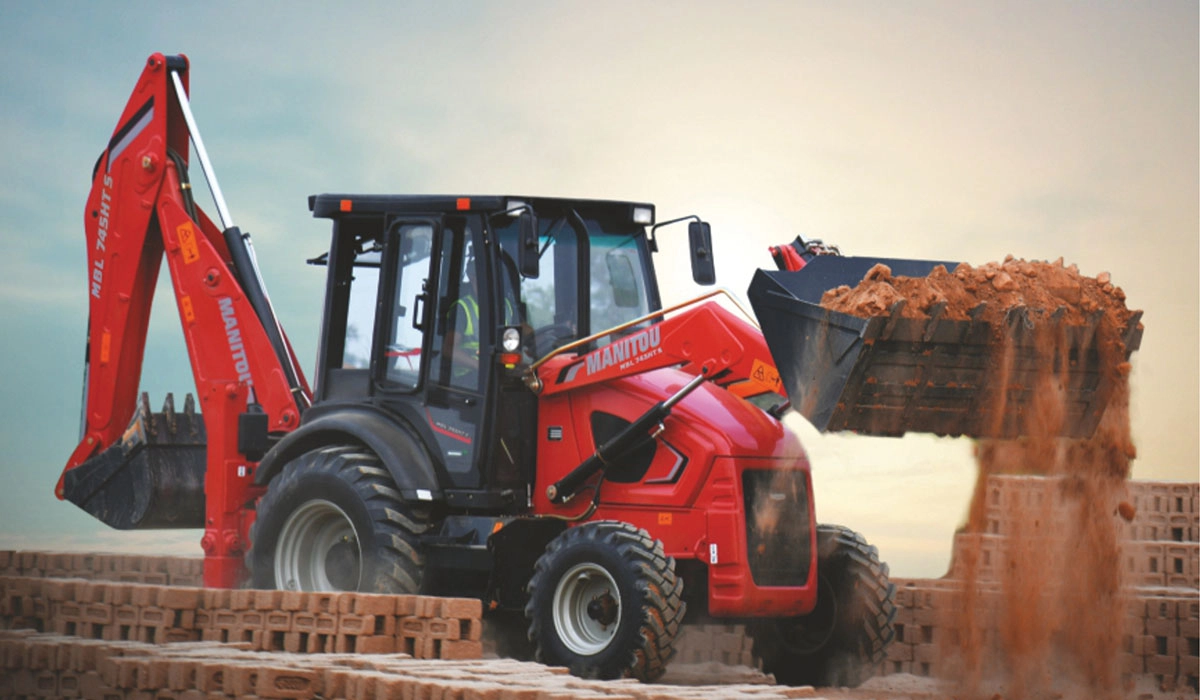
How has the BS-V transition impacted the cost of backhoe loaders, and what steps has Manitou taken to help customers manage these changes while still delivering long-term value?
The transition to BS-V emission norms has led to a noticeable price increase, about 7–8% on standard backhoe loader models, primarily due to the addition of advanced engine technologies, after-treatment systems, and mandatory safety features.To address this cost impact while ensuring value, Manitou India has adopted a multi-pronged approach:
- Value Engineering & Localization: We are optimizing designs using localized components and suppliers to reduce import dependency and control production costs without compromising performance or durability.
- Total Cost of Ownership (TCO) Focus: While upfront prices have risen, our BS-V machines offer improved fuel efficiency and enhanced uptime, resulting in lower operating costs over the equipment’s lifecycle. Our dealer network is trained to communicate this long-term value clearly.
- Warranty & AMC Offers: We offer extended warranties and cost-effective annual maintenance contracts (AMCs) to build customer confidence in the new technology and reduce unexpected costs related to emission systems or sensors.
- Operator & Technician Training: We are investing in training programs for both operators and mechanics to reduce misuse-related downtime and ensure machines are operated and maintained efficiently.
Improved fuel efficiency, up to 5–10%, is especially valuable for high-usage customers, lowering operational costs significantly. Extended service intervals and durable components further reduce maintenance expenses over the machine’s lifespan.
Manitou’s machines now include the “Easy Manager” application for smart telematics, IoT integration, GPS tracking, and predictive maintenance alerts. This enables real-time performance monitoring and remote diagnostics, helping contractors reduce downtime and optimize fleet efficiency.
With enhanced diagnostics, telemetry, and engine control systems, BS-V machines provide early issue detection, prevent breakdowns, and improve machine uptime. Ultimately, while the initial investment is higher, BS-V machines ensure compliance, boost long-term reliability, and deliver better returns through improved performance and reduced lifecycle costs.
Are you providing any training for operators and mechanics to handle the new systems introduced in BS-V compliant machines like the MBL 745 series?
Yes, Manitou India is committed to ensuring that operators and mechanics are fully prepared to manage the new systems introduced in BS-V compliant machines, particularly in our MBL 745 series. These systems, including electronic controls, dashboard alerts, and diagnostic tools, represent a significant shift from previous models, making proper training essential for smooth usage, minimal operational issues, and maximum uptime.Our training program equips operators to use electronic dashboards, interpret alerts, and manage DPF cycles, while promoting fuel efficiency and safety with systems like ROPS, FOPS, and reversing alarms. Technicians are trained in diagnostics, telemetry, and maintaining emission systems such as SCR, DOC, and DPF. Ongoing support includes system calibration, software updates, and both online and hands-on training with digital resources for continuous learning.
By empowering operators and mechanics with the right knowledge and tools, we reduce the risk of misuse, lower the chances of breakdowns, and enhance machine reliability—leading to improved productivity and uptime for our customers.
Whetstone Business Solutions: Sanjay Kumar Pendharkar
▼
"Buyers expect realistic support from manufacturers, such as extended warranties, flexible financing, strong service backup, and operator training, to help us manage costs while improving productivity and uptime."
Sanjay Kumar Pendharkar, Co-Founder & Chief Consultant, Whetstone Business Solutions
BS-V Backhoe Loader costs balanced by market growth
The transition from BS III to BS V emission norms has resulted in a significant price increase of ₹5–7 lakh for backhoe loaders over the past five years. However, this impact will be managed through several positive market developments.Backhoe loaders have evolved into truly multipurpose machines, with their utility expanding across sectors. Their availability for rental, sometimes even for a few hours, has made them indispensable in small- to mid-scale projects.
Nearly 70% of BHL purchases are made by small hirers, many of whom are first-time buyers. A number of operators eventually become owners, which has expanded last-mile equipment access. These new owners are now executing small, previously uneconomical jobs in remote areas.
Importantly, the timing of this price increase has coincided with rapid economic growth. The resulting rise in infrastructure activity and demand will help rental rates increase, enabling owners and hirers to recover costs more effectively.
For contractors using BHLs internally, the fuel efficiency of the new BS V-compliant engines will lower operating costs significantly, helping recover the additional capital expenditure in just a few months.
Overall, any short-term sales dip from July–September 2025 may result from the initial shock of the new pricing. But in the long run, unless there are broader economic disruptions, the impact on BHL sales is expected to be minimal.
What customers expect from OEMs
While buyers may hope that manufacturers will absorb part of the cost hike, this is unlikely due to the technological investments and mandatory industry upgrades required for BS V compliance.Instead, customers expect realistic support measures such as extended warranty periods, flexible financing solutions, enhanced service infrastructure to reduce downtime, and operator training programs focused on maximizing productivity and fuel savings.
These steps would ease the financial and operational burden of transitioning to BS V machines and promote better adoption among small buyers and contractors.
Electronics concerns often overstated
There is a general market perception that increased reliance on electronics, sensors, and advanced electrical systems in BS V machines will lead to more breakdowns and maintenance issues. However, this concern is often exaggerated.Historically, such concerns have been used by competitors as a tactic to discourage purchases from rival brands. Today, with universal BS V compliance, all manufacturers are using similar advanced components, making such comparisons less relevant.
Moreover, most backhoe loader buyers do not deeply analyze technical systems. Their focus remains on machine performance and operational reliability. Since all manufacturers must meet the same compliance standards, companies are less likely to raise these issues during sales discussions.
In the long term, the industry’s collective shift toward advanced electronics is expected to result in improved machine diagnostics, performance, and efficiency, once the technology matures and service support networks adapt accordingly.
Doosan Bobcat: Manjunath S
▼
While BS-V machines come at a premium, the focus is shifting from initial purchase price to total cost of ownership. With better fuel efficiency, reduced downtime, and improved reliability, these machines offer a more profitable and sustainable investment.
Manjunath S, Director - MH Sales, SIOP, Marketing, Doosan Bobcat
What is your outlook for the backhoe loader market in FY 2026 in the context of the BS-V transition?
FY 2026 is expected to begin with a dip in demand due to pre-buying activity in late FY 2025, as many contractors and rental firms advanced their purchases to avoid the additional costs of BS-V compliant machines. This front-loading is likely to delay fresh buying in the early part of the fiscal year. However, we anticipate a gradual recovery in the second half, supported by demand normalization, fleet replenishment, and momentum from new infrastructure projects.Several factors will contribute to this rebound: market absorption of BS-V price hikes, incentives from OEMs, and robust government spending on infrastructure and rural development post-elections. A normal monsoon could further support agriculture-related construction demand. Continued support from banks and NBFCs, along with eased credit norms, will aid sales growth.
If BS-V machines demonstrate improved fuel efficiency and reliability, we expect faster adoption, which may also drive a shift toward premium products. Overall, FY 2026 should witness a balanced and broad-based recovery.
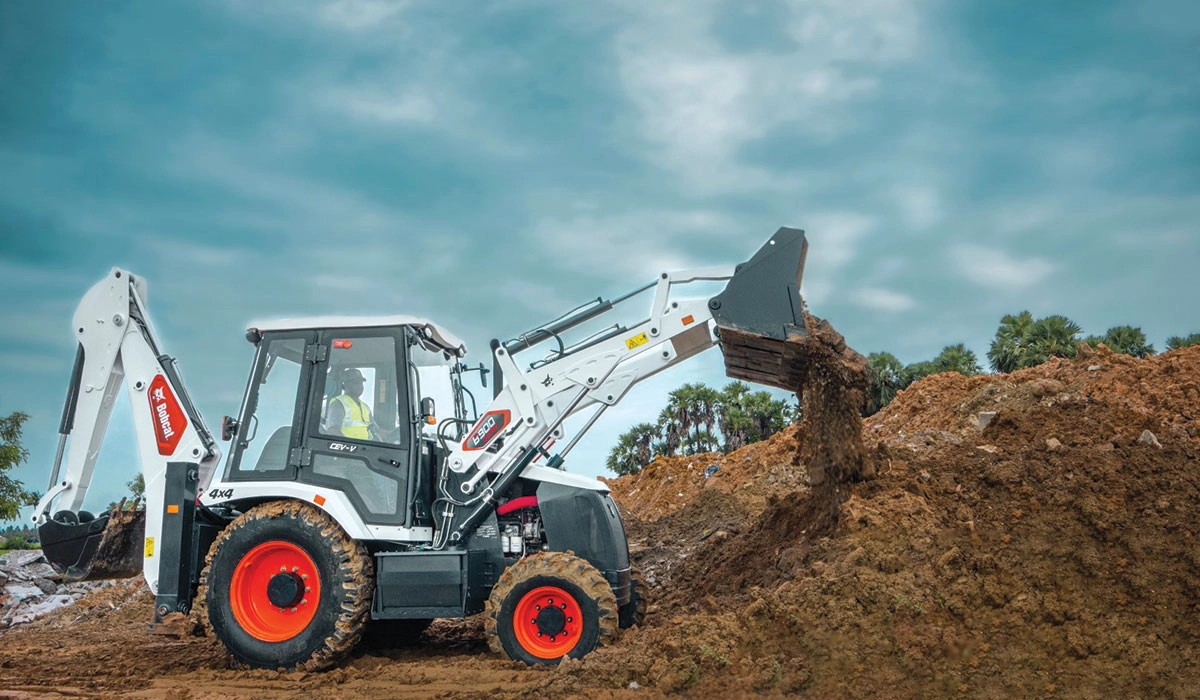
What key technical and safety upgrades have been made to backhoe loaders to comply with BS-V emission norms?
To comply with BS-V emission norms and the latest safety regulations, backhoe loaders have undergone significant technical and design advancements. Mechanical engines have been replaced with electronic control modules (ECMs) for more precise fuel management. Advanced emission control systems such as Diesel Particulate Filters (DPF), Selective Catalytic Reduction (SCR) or Diesel Oxidation Catalysts (DOC), and Exhaust Gas Recirculation (EGR) have been integrated to reduce soot and NOx emissions.Mandatory Onboard Diagnostics (OBD) now monitor system performance and detect issues like DPF blockages. High-pressure fuel injection systems have also been introduced to enhance engine efficiency.
On the safety front, upgrades in line with CMVR and AIS 133 norms include ROPS/FOPS-certified cabins, seat belt interlocks, emergency exits, and ergonomic improvements. Features like wider windscreens, rearview cameras, and LED lighting further enhance operator safety, visibility, and overall performance, while also helping reduce the machine’s environmental footprint.
How are OEMs helping customers manage the higher costs associated with BS-V compliant backhoe loaders, and what benefits do these machines offer in the long run?
The transition to BS-V norms has undoubtedly increased the cost of backhoe loaders due to advanced emission systems, electronic engines, and enhanced safety features. However, manufacturers are actively mitigating these challenges through a combination of design optimization, localization of components, and value engineering to control production costs and reduce reliance on imports.Despite the higher upfront price, BS-V compliant machines offer 5–10% better fuel efficiency, thanks to electronic fuel control systems and telematics that enable real-time monitoring, reduce idle time, and enhance overall machine performance. Over a 3–5 year period, fuel savings and lower maintenance expenses can offset the initial cost difference.

Key features such as extended service intervals, predictive maintenance, and improved diagnostic systems reduce downtime and maintenance costs, improving uptime and equipment availability. For contractors and rental companies, this translates to higher utilization rates and better returns on investment. Enhancements in operator comfort, visibility, and safety contribute to improved on-site productivity.
To ease the financial burden, OEMs and financial institutions are offering a range of flexible financing solutions. These include low down payments, customized loan terms, and competitive interest rates. Leasing is also becoming increasingly popular, especially among registered and bulk buyers with established company credentials, such as a balance sheet, GST registration, and credit history, as it allows equipment use without full ownership costs, often with buy-back or upgrade options. Exchange programs and trade-in schemes further help reduce the effective purchase price.
While BS-V machines come at a premium, the focus is shifting from the initial purchase price to total cost of ownership. Long-term savings, higher efficiency, and improved reliability make these machines a more profitable and sustainable investment, especially for small contractors and first-time buyers navigating this technology transition.
What are the opportunities and challenges in integrating alternative fuels into BS-V compliant backhoe loaders?
As an OEM, integrating alternative fuels such as CNG, LNG, biodiesel, or electric power into BS-V compliant backhoe loaders requires several critical steps. These include redesigning engine platforms for multi-fuel compatibility, investing in R&D to optimize performance, and ensuring adherence to evolving emission regulations. Collaborations with fuel suppliers and infrastructure providers are also crucial to support fuel availability and aftersales service.Operator training and updated safety protocols are necessary to ensure safe and efficient use of these new technologies. However, several challenges remain. The lack of widespread refuelling infrastructure, particularly in rural areas, could limit adoption. Higher upfront costs, concerns around power output, and questions about machine uptime may also deter potential buyers. The absence of standardized regulations for alternative fuels adds to the complexity.
To overcome these hurdles, OEMs must develop scalable solutions, offer strong customer support, and clearly communicate the long-term advantages, such as lower emissions and reduced operating costs. A phased rollout, starting with pilot projects, will help build customer confidence and pave the way for broader adoption.
What steps is Doosan Bobcat India taking to train operators and mechanics for BS-V compliant backhoe loaders?
Doosan Bobcat India is actively addressing the need for skill development by providing comprehensive training to operators and mechanics. At our ALAO Training Centre in Gummidipundi, we conduct dedicated programs focused on the smooth operation and maintenance of BS-V backhoe loaders, ensuring users are familiar with the new systems.In addition, we run regional operator training sessions that cover machine operation, safety practices, and support systems. We've also partnered with an operator training school to skill unemployed youth through hands-on training, helping them understand and effectively operate modern equipment.
For experienced technicians, we offer specialized training that requires more advanced technical knowledge to handle the complexities of BS-V compliant machines.
PH lnfratech: lrinder Ahluwalia
▼
"In the rental business, while machine costs are rising sharply with new emission norms, hiring rates remain stagnant, making the business unsustainable for small players."
Irinder Ahluwalia, Partner, PH Infratech
Rising machine costs vs stagnant rental rates
With the shift to BS IV and now BS V emission norms, fuel efficiency has definitely improved because unburnt fuel is minimized. But the benefit of this higher fuel efficiency goes to the contractor who rents the machine, not to the hirer or rental company.The problem is that these machines have become extremely sensitive. Mechanics, operators, even the dealers' service teams are simply not trained enough to handle the advanced technology. Most of the time, you need a laptop or computer to diagnose even minor issues, but these are not easily available, and neither is skilled manpower. I'm not just talking about my operators, even dealer technicians are not fully trained for these BS V machines.
Every time there’s a fault code on the machine, you need to call an engineer, and this involves ₹5000–7000 in charges, including visit fees, fuel charges, and sometimes unnecessary costs that could have been handled over the phone. As a result, the operational cost keeps rising. Maintenance costs, admin charges, operator wages, everything is going up, but the hiring rates have remained almost the same.
While the machine cost has increased by ₹7–8 lakh, profitability has sharply declined. In fact, for many rental players, the business model has become unsustainable. You need to keep at least 50% of your fleet idle to be able to balance costs. A single-machine owner cannot survive in this business anymore. You must have a fleet where some machines stay idle to support the running of new machines.
Technology becoming too sensitive for the market
The machines have become so high-tech and sensitive that even simple washing can cause damage, you can’t even wash them with water anymore; only compressed air can be used. The level of electronics, sensors, and precision is comparable to high-end car engines like BMW or Mercedes. But in our rental market, the support systems are not ready to handle such sophisticated equipment. The increased use of electronic sensors and electrical components is also leading to more frequent breakdowns and higher maintenance costs.Lack of transition time and trained manpower
The problem is, we are changing technology too fast, from Euro 3 to Euro 4, and now BS V, without allowing enough transition time. The pace is so quick that even engineers and operators haven’t had time to adapt. Many of our engineers are still from the old school of thought, and now you need laptops to diagnose these sensing machines. This requires proper training, but the speed of change is outpacing the training.The financial burden is also increasing. First, there’s a big hole in the pocket due to rising machine costs, while hiring charges remain stagnant. Second, maintenance costs have doubled. For example, earlier servicing a Euro 3 engine used to cost ₹10,000, now it costs double. Even the service charges from dealers have risen sharply, if earlier they charged ₹100 for Euro 2 machines, now they charge ₹400 for BS V machines. Similarly, the fees for service engineers have also gone up threefold.
Support from manufacturers
Actually, the problem isn’t only with the equipment manufacturers, it starts with the engine manufacturers. We have only one or two engine suppliers in the country, and they are extracting money from the equipment manufacturers. In turn, the equipment manufacturers pass on this cost to us, the buyers. What we expect from manufacturers is support in reducing costs, lower service charges, more affordable spare parts like filters, and a reduction in equipment pricing. Because at the end of the day, rental customers don’t pay us extra for the machine’s higher price, we have to absorb that cost ourselves.Hiring rates have not gone up and will never go up. That’s the harsh reality.
Another critical area where we need support is manpower training. Service engineers, operators, everyone needs to be properly trained. The transition in technology is happening so fast that we simply don’t have enough trained manpower in the country. Whether it's operators or service engineers, there’s a huge shortage, and very few people are willing to take up these jobs. That’s one of the biggest challenges we are facing.
Bull Machines: V. Parthiban
▼
With BS-V emission norms, we’ve not only upgraded to proven engine technologies but also improved fuel efficiency, productivity, and uptime, ensuring our customers get more value despite the regulatory cost increase.
V. Parthiban, Managing Director, Bull Machines
How has Bull Machines performed in recent years, and what factors are driving your growth in the backhoe loader segment despite industry challenges?
While the overall Indian backhoe loader industry remained flat in FY25 due to pre-buying and emission-related cost hikes, Bull Machines maintained its growth trajectory. We grew by 30% in domestic sales in FY24, and over 50% the year before. For FY26, we expect strong growth based on three key factors:- Performance Leadership – BULL machines have consistently outperformed multinational competitors, especially in terms of fuel efficiency and productivity in real-world conditions.
- Brand Trust Expansion – Customers who initially tried Bull with skepticism are now repeat buyers, and positive word-of-mouth is strengthening our credibility.
- Supply Chain Strengthening – We’re doubling our production capacity from 4,500 to 9,000 units per year to meet rising demand and close the supply gap experienced last year.
Many customers who previously used multinational machines now recognize Bull for its superior fuel efficiency and productivity. This has positioned Bull as the most value-driven backhoe loader in the segment and made us the fastest-growing brand in India and globally. Last year, Bull became the number 2 player in the Indian backhoe loader industry by volume.
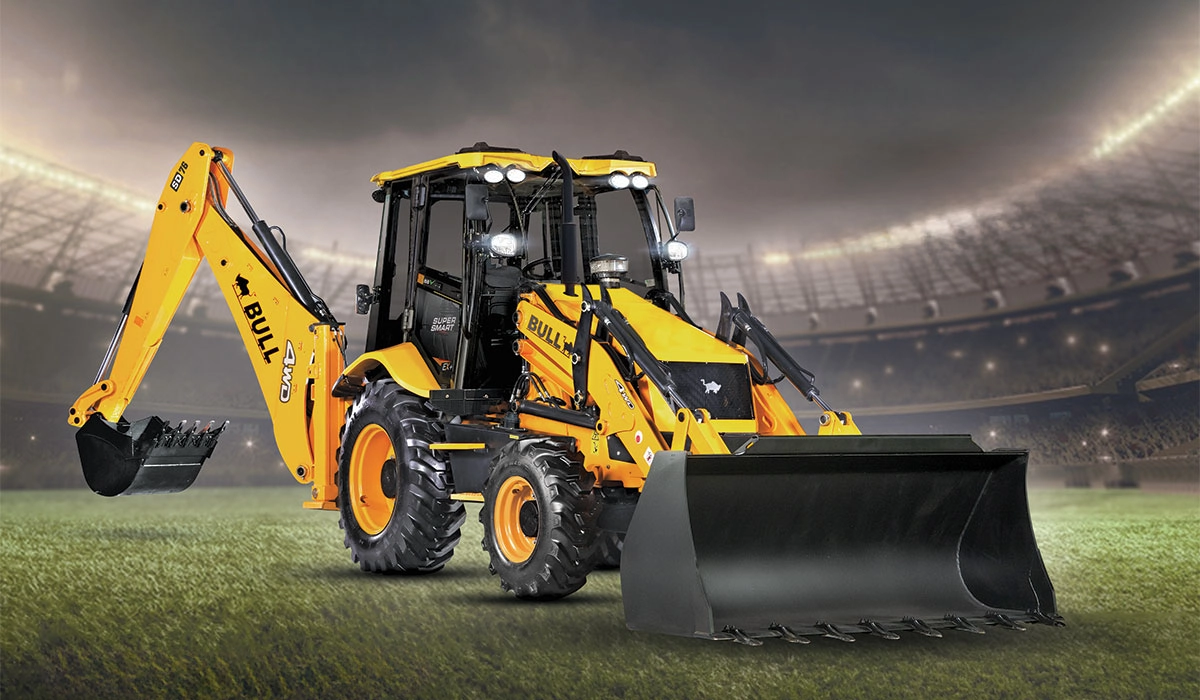
How has BS-V compliance impacted the cost of backhoe loaders, and how are you addressing customer concerns around pricing and value?
The overall cost impact of BS-V compliance has resulted in a price increase of around 7–8%, primarily due to the upgraded engine and emission systems. To balance this, we’ve optimized costs across other components, streamlined our manufacturing processes, and improved design efficiency.More importantly, we are delivering added value, enhanced fuel efficiency, increased productivity, and longer service intervals, ensuring better return on investment for our customers. We’ve also partnered with leading banks and NBFCs to offer competitive EMIs and leasing options that help reduce the burden of the upfront investment. As the number two backhoe loader brand in India and the fastest-growing globally, we enjoy strong support from all major financing partners and are jointly working with them to provide the best possible financing solutions for BS-V equipment.
It’s also worth noting that BS-V is new only to the backhoe loader segment. The Indian automotive industry has already transitioned to BS-VI, and the components now used in backhoe loaders are well-proven in that space. While there is a cost burden due to regulatory requirements, these are input-driven and must be passed on.
That said, the technology is continuously evolving, leading to better productivity, improved uptime, and greater efficiency. So, while the initial investment is higher, the additional cost will be recovered over time through operational savings and enhanced performance.
What are the key changes made in backhoe loaders to comply with BS-V emission norms and the newly implemented safety standards?
We’ve introduced the Kirloskar engine to comply with BS-V emission norms, a well-proven engine with strong market demand. We've launched another variant powered by an Ashok Leyland engine. Both deliver 74.5 HP and are engineered to deliver strong, consistent performance.We’ve redesigned the powertrain with a higher-capacity engine and oversized emission control components. This reduces operational stress, leading to longer service intervals and improved uptime. While certain emission components like DPFs or sensors may be slightly of higher specifications as they are built for longer life cycles.
On the safety front, our machines have always exceeded earlier Indian norms. Even before the updated standards were enforced, we were fully compliant. With exports to 68 countries, we were already meeting global safety benchmarks, so aligning with Indian compliance was seamless.
We've also simplified our diagnostic systems to help mechanics identify and resolve issues faster, cutting down on man-hours and reducing unplanned downtime. Thanks to these upgrades, the total cost of ownership remains competitive, driven by enhanced efficiency, durability, and performance.
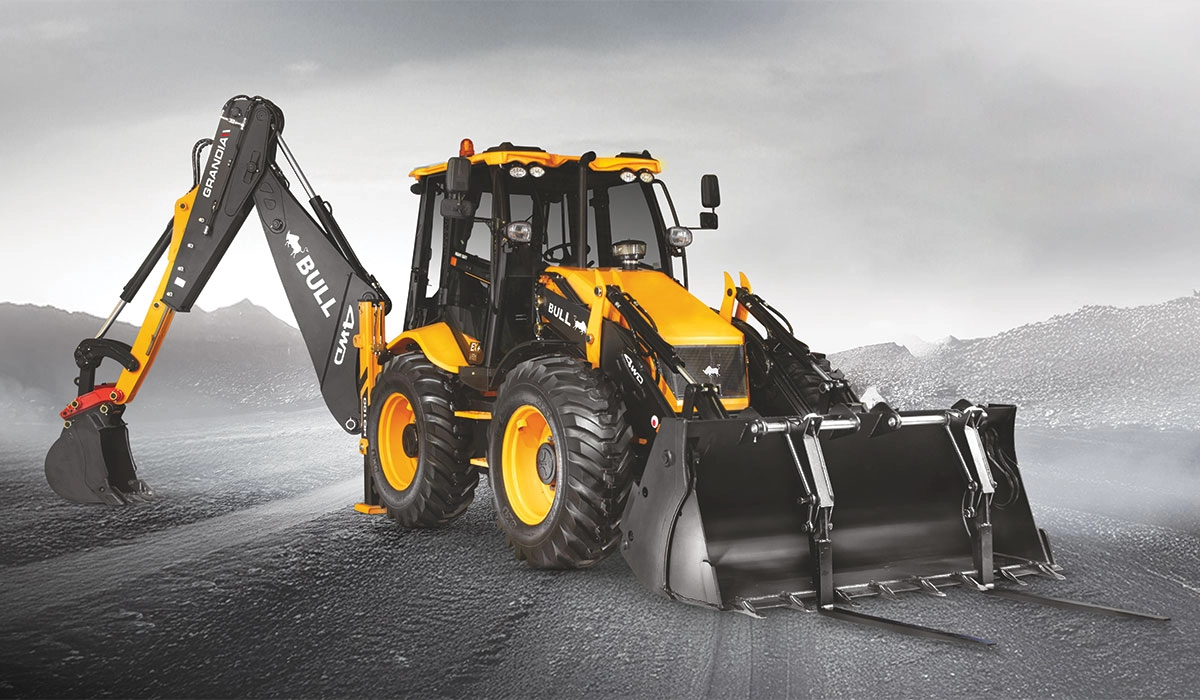
What is your stance on introducing electric or alternative fuel backhoe loaders in India, considering global trends?
It’s not easy. In a country like India, or any developing nation, construction equipment doesn’t operate on roads like passenger vehicles. Supporting infrastructure, such as EV charging, is still a long way off, probably at least a decade away.While we could technically offer alternative fuel solutions, the lack of infrastructure would ultimately burden customers. That’s why we’re not prioritizing EV, hybrid, or other alternative fuel options at this stage.
Instead, our focus remains on enhancing core machine performance, improving fuel efficiency, adding advanced features, and ensuring better operator comfort.
Are you providing any training for operators and mechanics on the new systems to handle the new technologies in BS-V compliant machines for efficiently?
Training is a critical part of our BS-V implementation strategy. We provide structured training for both operators and mechanics through:- Pre-Delivery Training (PDI) – Our dealers conduct hands-on orientation sessions during delivery, using a standard checklist to cover electronic controls, dashboard alerts, and diagnostic indicators.
- On-Site Mechanic Programs – We’ve introduced technical training modules for dealership service staff and customer mechanics, focusing on advanced diagnostics, electronic troubleshooting, and preventive maintenance.
This training-first approach is helping us increase customer satisfaction, reduce downtime, and strengthen loyalty both in India and across global markets.
Mahindra Group: Dr. Venkat Srinivas
▼
Advanced technologies and real-time diagnostics in our BS-V backhoe loaders are redefining machine performance and reliability in the Indian construction sector.
Dr. Venkat Srinivas, Business Head, Truck and Bus & Construction Equipment Mahindra Group
What is your outlook for the backhoe loader market in FY 2026 following the BS-V transition?
As we look forward to FY 2026, the backhoe loader market is projected to grow steadily, driven by India’s ongoing development journey. Key factors such as rapid urbanization, major infrastructure projects, like smart cities, tunnels, railways, dams, and ports, and the rising demand for affordable housing are expected to fuel this growth.However, there may be a temporary slowdown in the first quarter due to the impact of CEV-V emission norms and the resulting price hikes, which could cause a brief pause in purchases. Despite these initial challenges, the overall outlook for the year remains positive, with strong demand expected throughout FY 2026.
What major upgrades have been made to your backhoe loaders to meet BS-V emission norms and new safety regulations?
To align with BS-V emission standards and the newly implemented safety requirements, our backhoe loaders have undergone significant upgrades, focusing on environmental sustainability, operator safety, and overall machine productivity and reliability.One of the key changes is the integration of advanced after-treatment systems such as Diesel Particulate Filters (DPF), Selective Catalytic Reduction (SCR), and Diesel Oxidation Catalysts (DOC), which drastically reduce particulate matter and nitrogen oxide emissions. Engines are now equipped with electronically controlled Common Rail Direct Injection (CRDI) technology, ensuring precise fuel injection and optimized combustion for better efficiency and lower emissions.
Enhanced turbochargers and Exhaust Gas Recirculation (EGR) systems further improve air-fuel management, promoting cleaner burning and improved engine performance. To support these upgrades, advanced engine controls and diagnostics have been introduced, enabling real-time monitoring, predictive maintenance, and smoother operation.

How are manufacturers helping customers manage the increased costs associated with CEV-V compliant backhoe loaders?
The upgrades mandated by CEV-V compliance have raised the upfront purchase cost, which can be a financial challenge, especially for first-time buyers or those operating within tight budgets.To address this, manufacturers are adopting several strategies. These include value-added services like extended warranties, maintenance packages, and Annual Maintenance Contracts (AMCs) that help ensure higher uptime and lower operating costs throughout the equipment’s lifecycle.
Tailored financing options, such as extended repayment tenures, lower EMIs, and seasonal payment plans, are being offered in collaboration with leading financial institutions to ease the initial financial burden. Manufacturers are also working to optimize production and supply chain costs to keep prices competitive without compromising quality or reliability.
By simplifying technology, ensuring the ready availability of spare parts, and strengthening service networks, manufacturers aim to make the transition to CEV-V machines smoother and more accessible. These measures help offset the higher initial investment by offering greater long-term value and operational efficiency.
What long-term value do CEV-V compliant backhoe loaders offer to backhoe loaders users?
CEV-V compliant equipment deliver significant long-term benefits in terms of productivity, profitability, uptime, and equipment availability, making them a valuable investment for construction operations. These machines are equipped with advanced technologies that enhance overall performance by delivering higher power output per liter of fuel while minimizing emissions, thus increasing on-site productivity.From a profitability standpoint, improved fuel efficiency leads to substantial cost savings, especially for customers with high equipment utilization. Reduced fuel consumption, longer service intervals, and more durable components help lower maintenance and repair expenses over the machine’s lifecycle, ensuring better return on investment. Enhanced engine performance and reduced emissions further boost reliability, contributing to long-term value and cost-effectiveness for users.
The integration of smart technologies like iMAXX enables real-time performance monitoring, predictive maintenance alerts, and remote diagnostics. These features help minimize idle time, optimize workload distribution, and improve operational efficiency.
How is your company preparing operators and mechanics to handle the new BS-V compliant backhoe loaders equipped with advanced technologies?
We prioritize training as a critical part of our strategy to ensure seamless adoption of BS-V compliant machines equipped with advanced technologies like electronic controls and diagnostics. To support this, we have established a comprehensive training initiative, including our Operators Academy, which focuses on empowering operators and mechanics with the skills needed to manage these modern systems effectively.Through the Operators Academy, we offer structured training programs tailored to different experience levels. For operators, hands-on sessions focus on real machine usage, improving productivity and familiarizing them with new features. These sessions help operators understand system functionality, leading to smoother operations and fewer user-related issues. The training emphasizes practical knowledge and real-world scenarios to build confidence in handling CEV-V compliant equipment.
Concluding the Dialogue…
▼BS-V Backhoe Loaders Mark a Win-Win Transformation for Manufacturers and Buyers
The Bharat Stage-V (BS-V) transition marks a significant engineering and operational milestone for India’s backhoe loader segment. While the initial capital cost increase, ranging from Rs 5 to Rs 7 lakh per unit, has raised valid concerns among end-users, particularly rental operators and first-time buyers, original equipment manufacturers (OEMs) have systematically addressed these challenges through technological upgrades, maintenance efficiencies, and financing innovations that collectively optimize the total cost of ownership.
To comply with the stricter emission thresholds for particulate matter and nitrogen oxides, backhoe loaders are now equipped with advanced exhaust after-treatment systems such as Diesel Oxidation Catalysts (DOC), Diesel Particulate Filters (DPF), and in some models, Selective Catalytic Reduction (SCR) using AdBlue. These systems are supported by electronically controlled engines that, when integrated with variable displacement hydraulics and automatic idle management, offer measurable fuel efficiency improvements in the range of 10–20%. Over a typical five-year machine lifecycle, this results in operational savings between Rs 3 lakh to Rs 4.5 lakh, significantly narrowing the cost gap created by the emission norm upgrade.
OEMs have also introduced service-friendly design improvements. Hydraulic oil change intervals have been extended to as much as 4,000 operating hours, and diesel and lube filter intervals have been doubled in many models, reducing maintenance downtime and associated labor costs. Warranty coverage has been extended to two years in most cases, and machines now come equipped with telematics platforms that enable real-time diagnostics, usage tracking, and predictive maintenance, minimizing breakdowns and enhancing machine availability.
On the financial side, OEMs, in partnership with banks and non-banking financial companies, are offering flexible financing schemes featuring longer repayment periods (up to 5–7 years), higher loan-to-value ratios, and competitive interest rates. These measures are crucial for easing cash flow pressure on buyers while enabling faster adoption of the new-generation machines.
Though the rental ecosystem remains fragmented and under pressure due to stagnant hire charges and rising input costs, industry consolidation is expected. Larger fleet operators and rental associations are poised to bring rate discipline and drive professionalization. As equipment utilization improves with accelerating infrastructure projects and capital expenditure deployment, return on investment is likely to stabilize by the second half of financial year 2025–26.
The bottom line is, BS-V compliance is not just a regulatory mandate, it represents a strategic transformation toward fuel-efficient, environmentally responsible, and digitally connected construction equipment. With a supportive ecosystem of policy, innovation, and financing, this transition is set to deliver long-term value for both manufacturers and equipment users alike.







